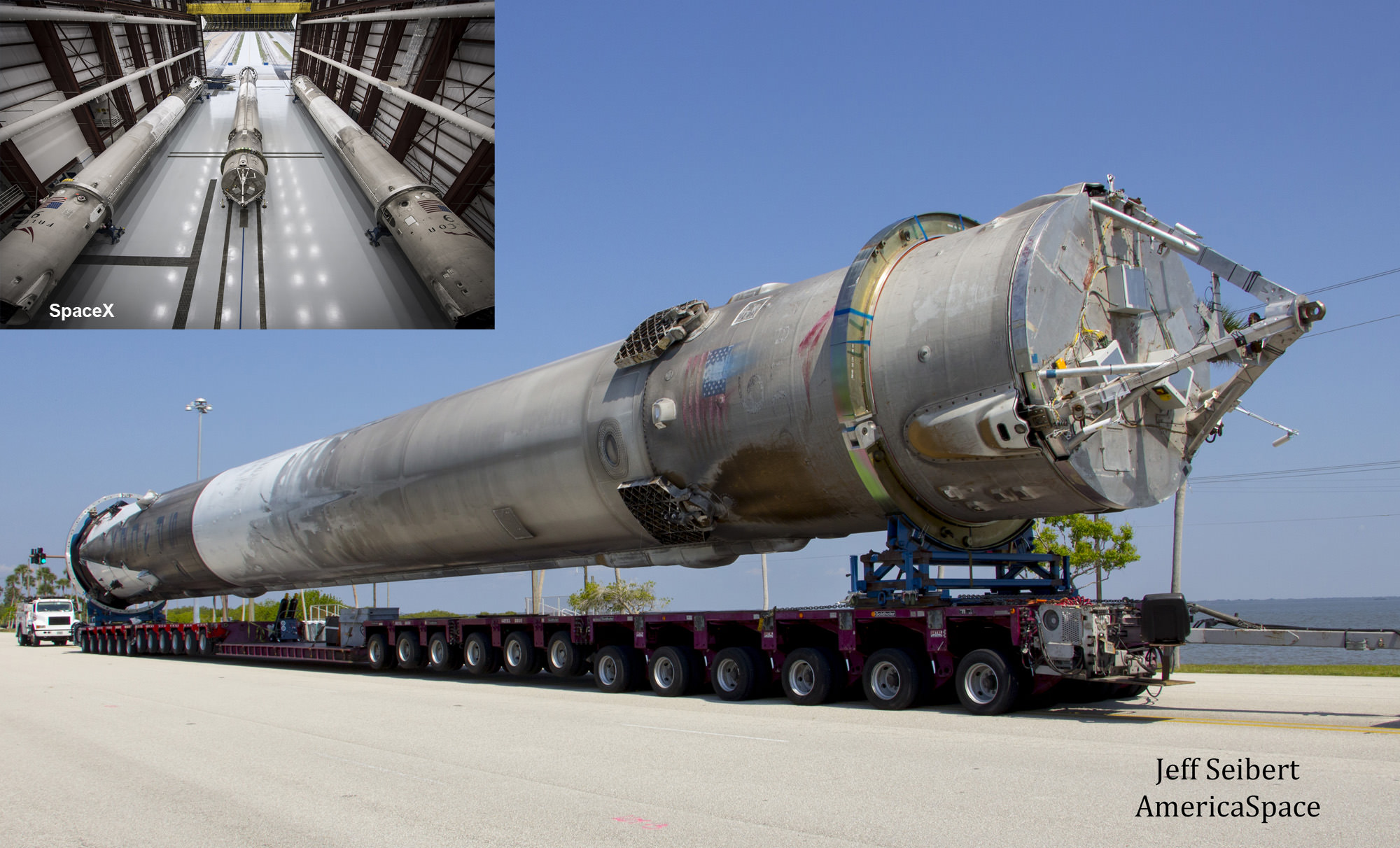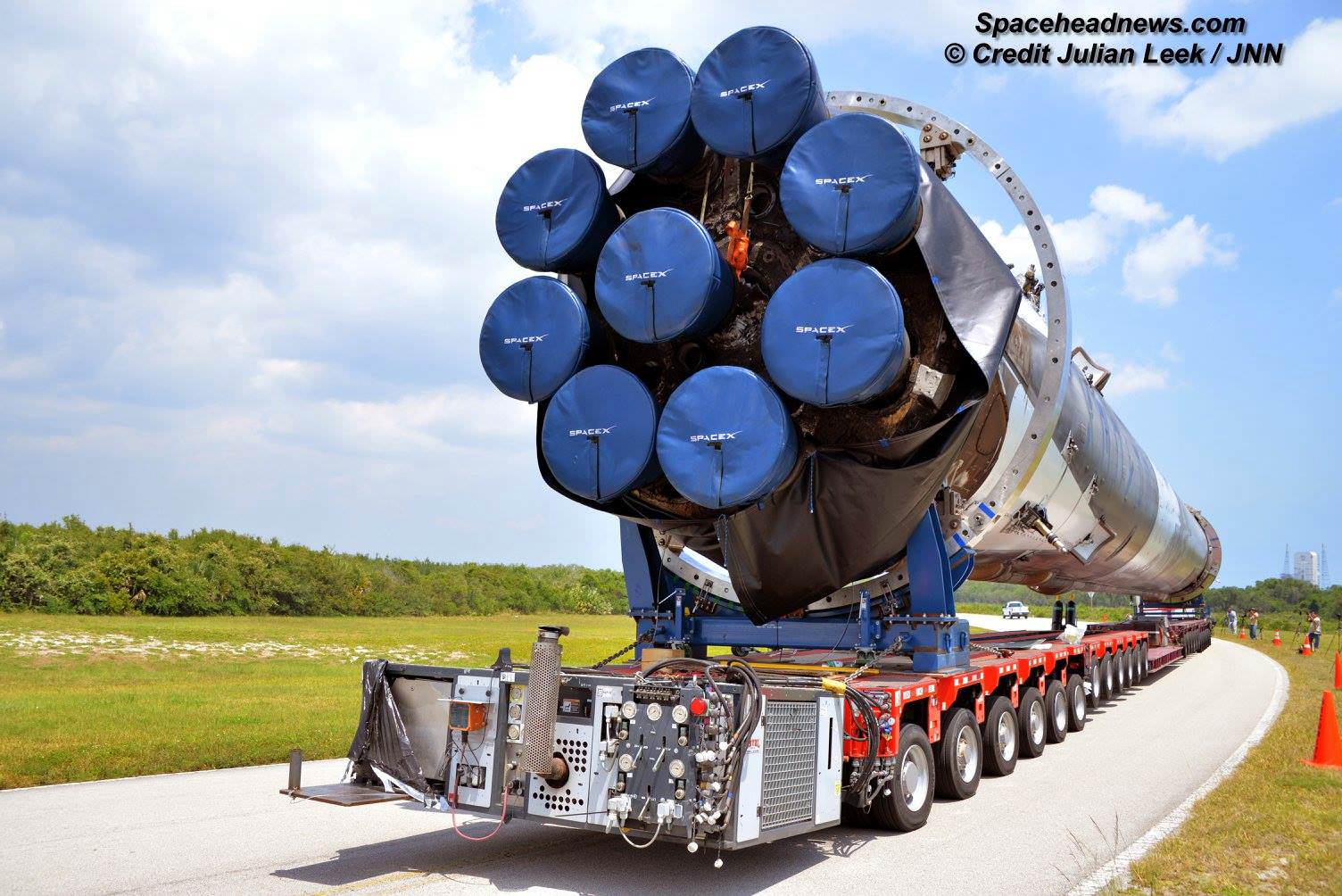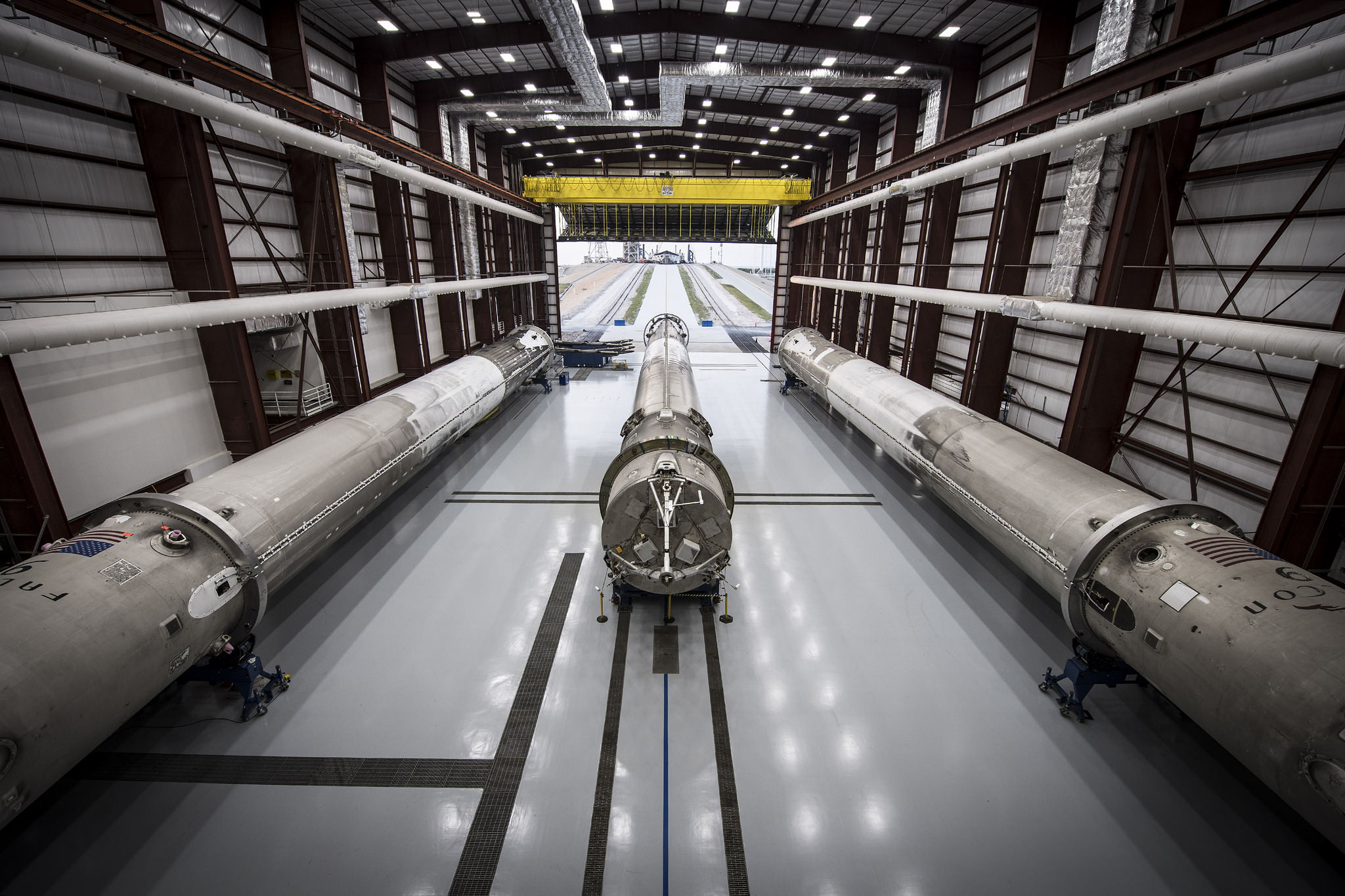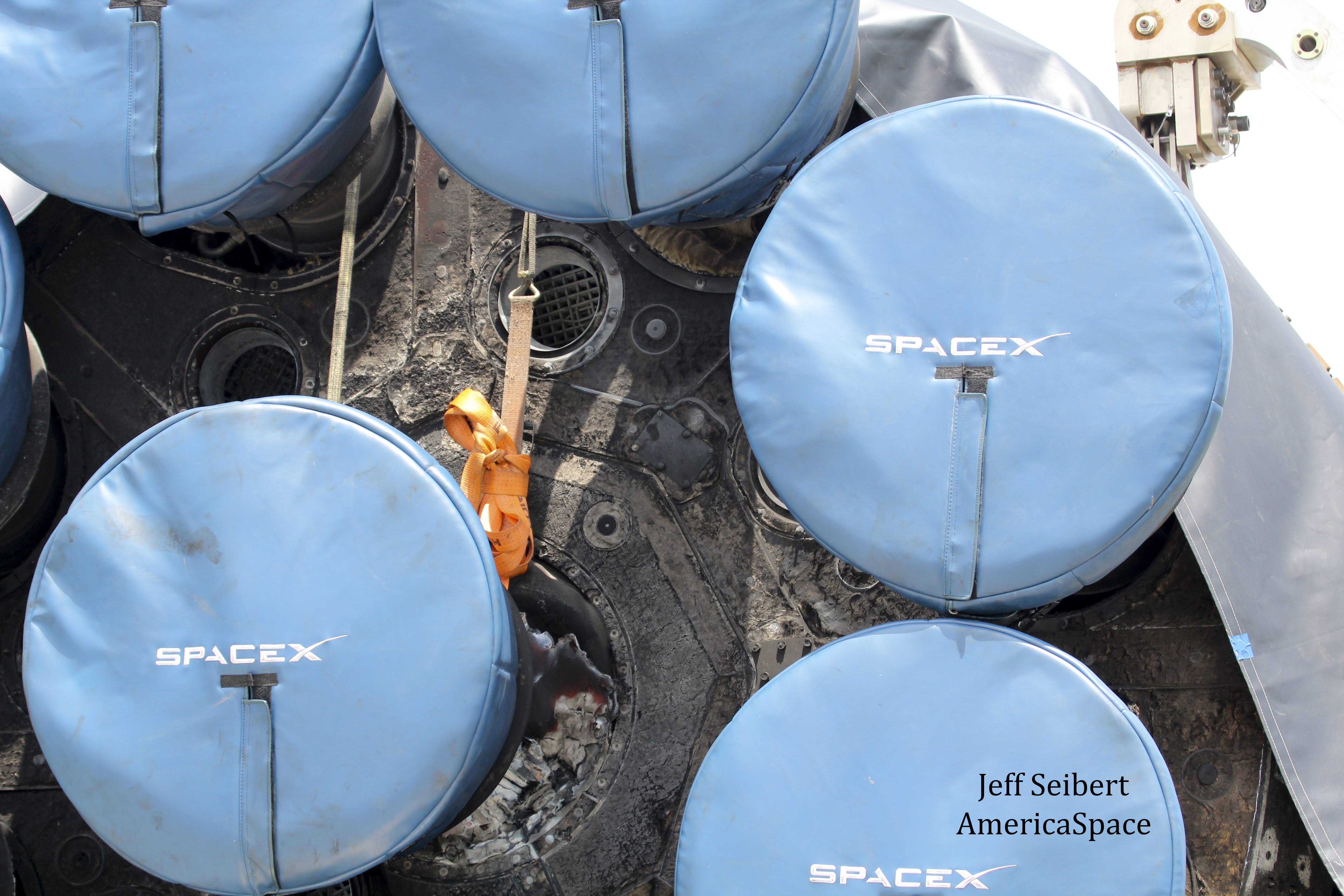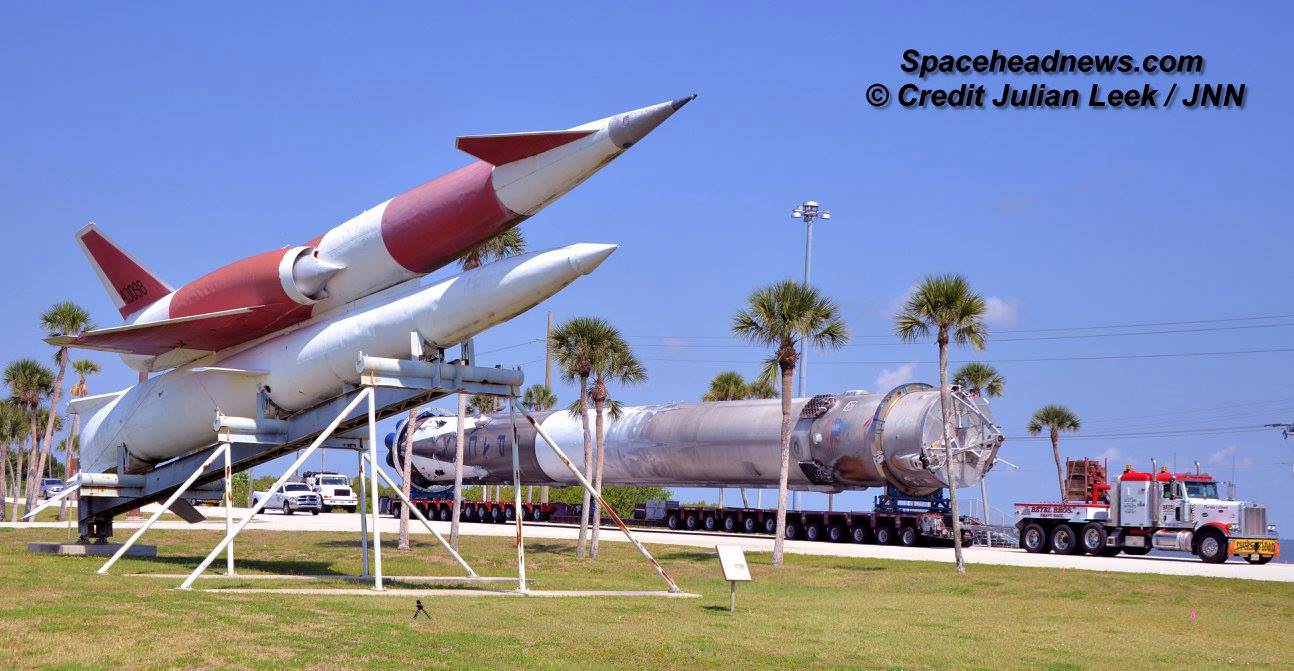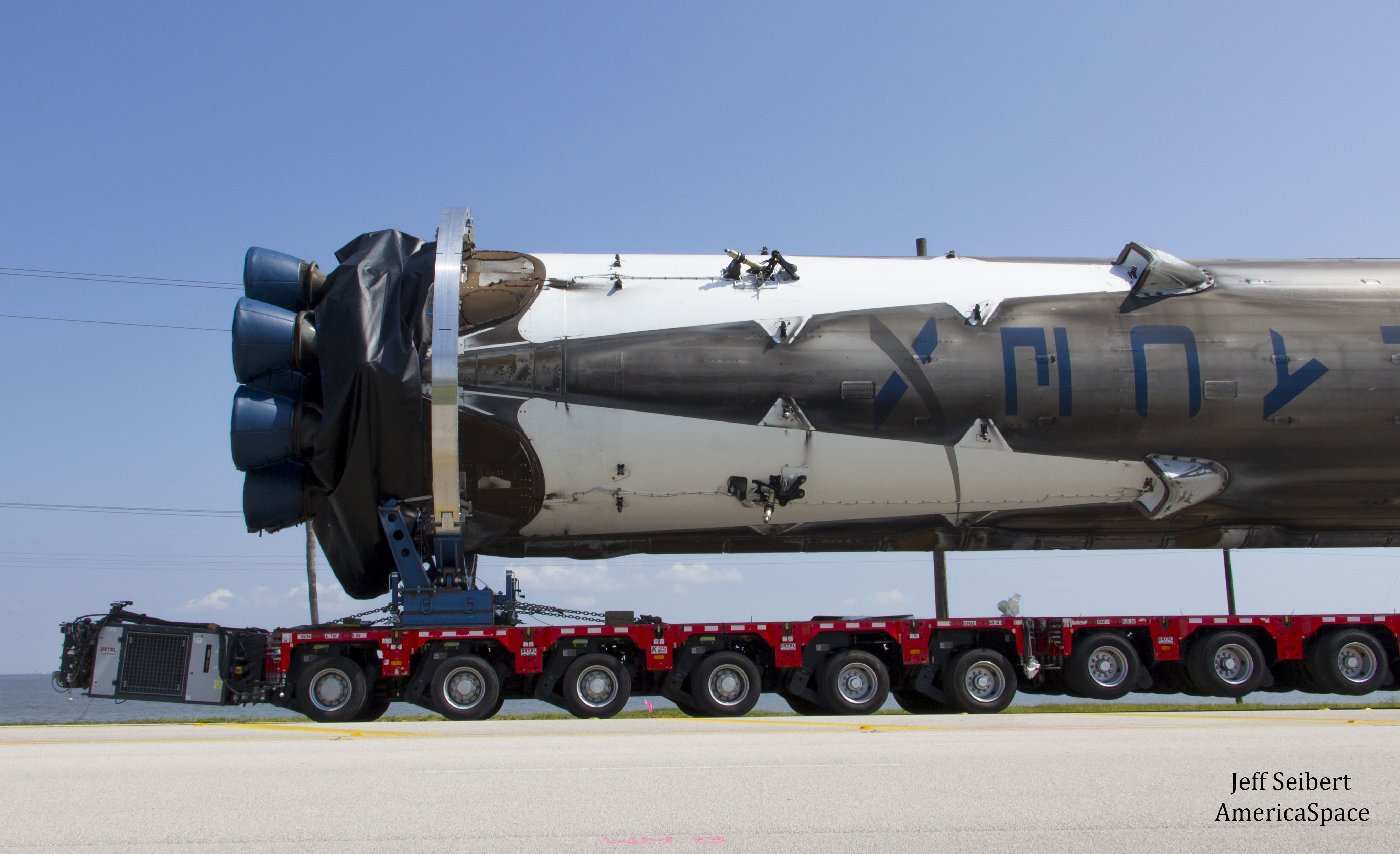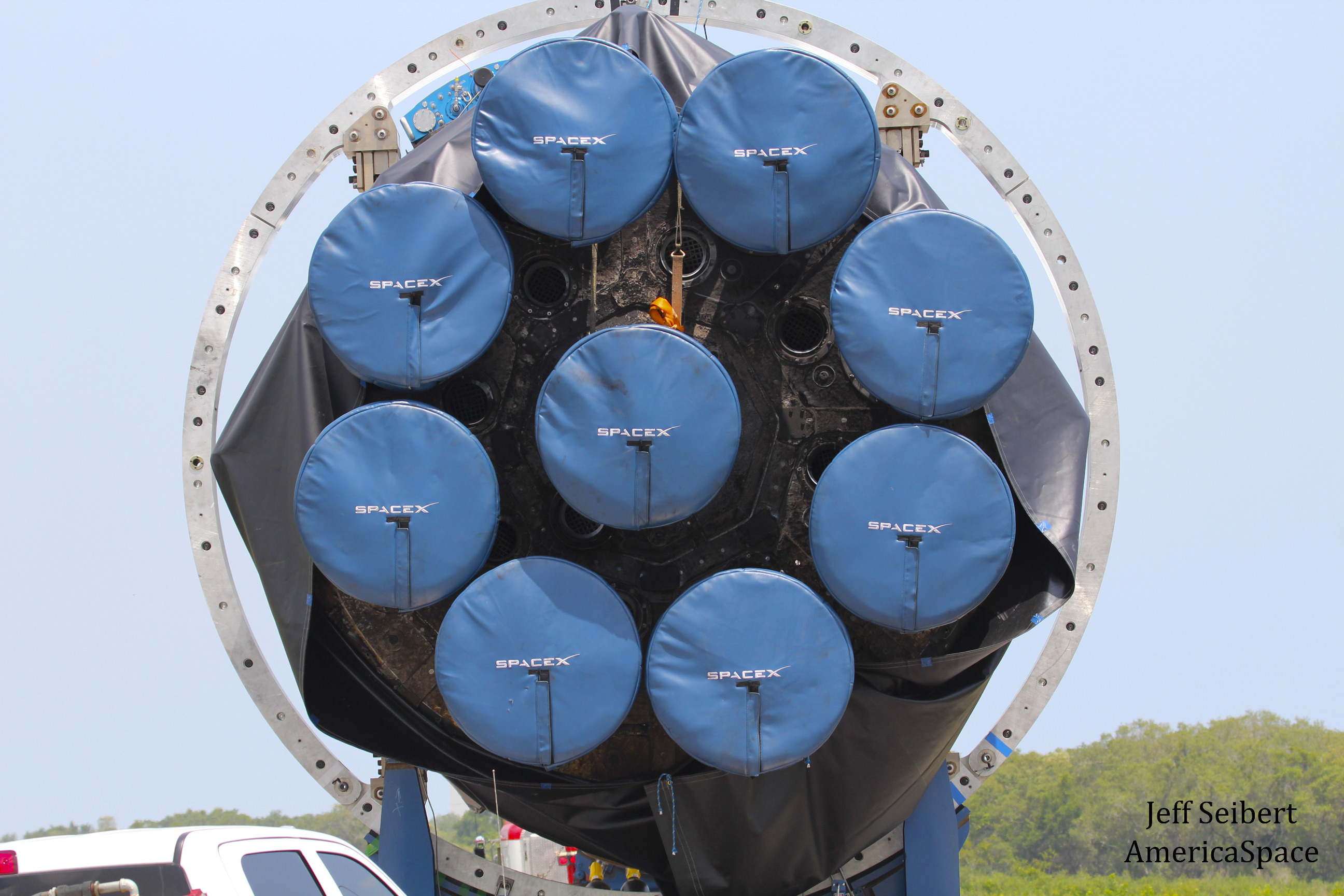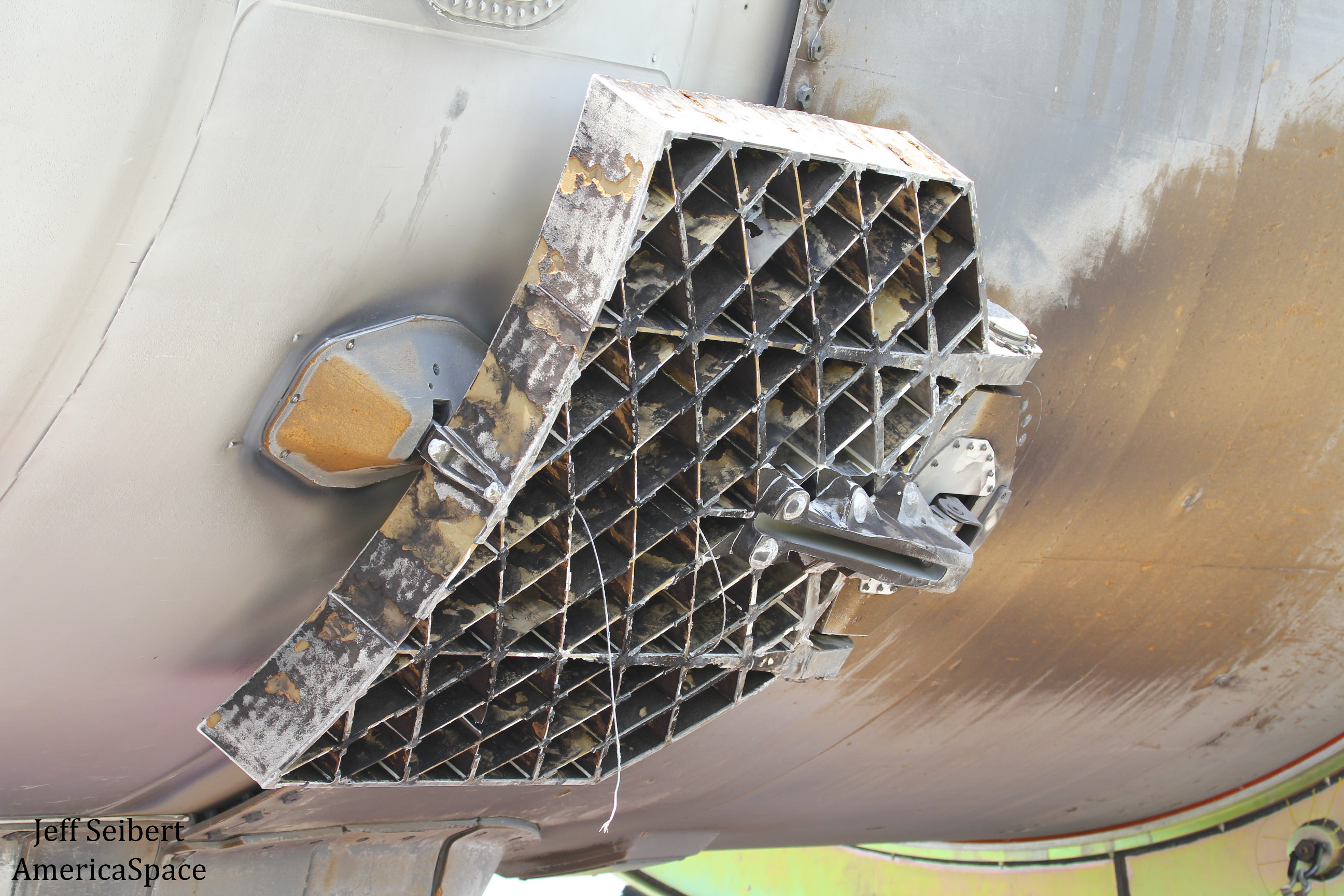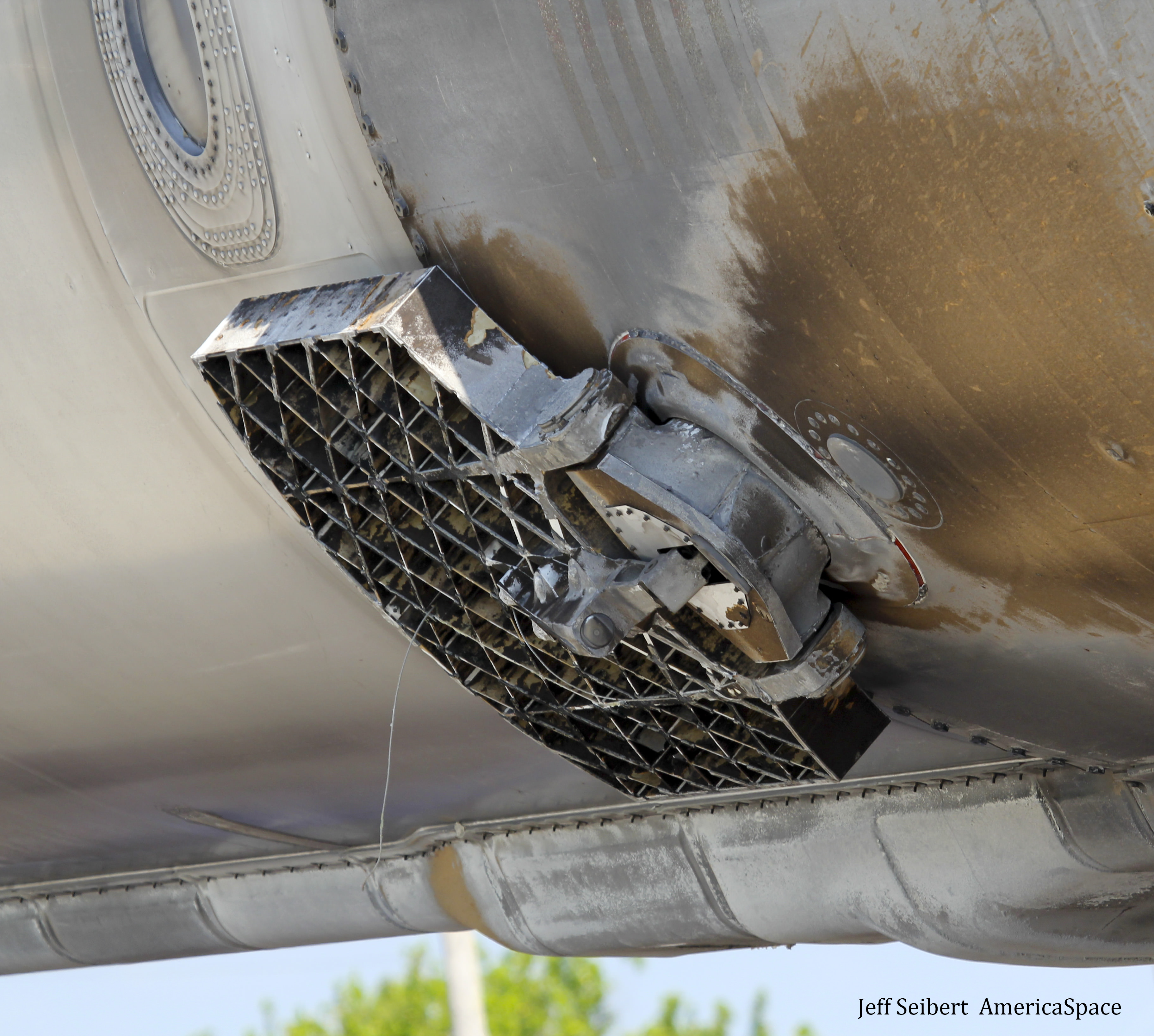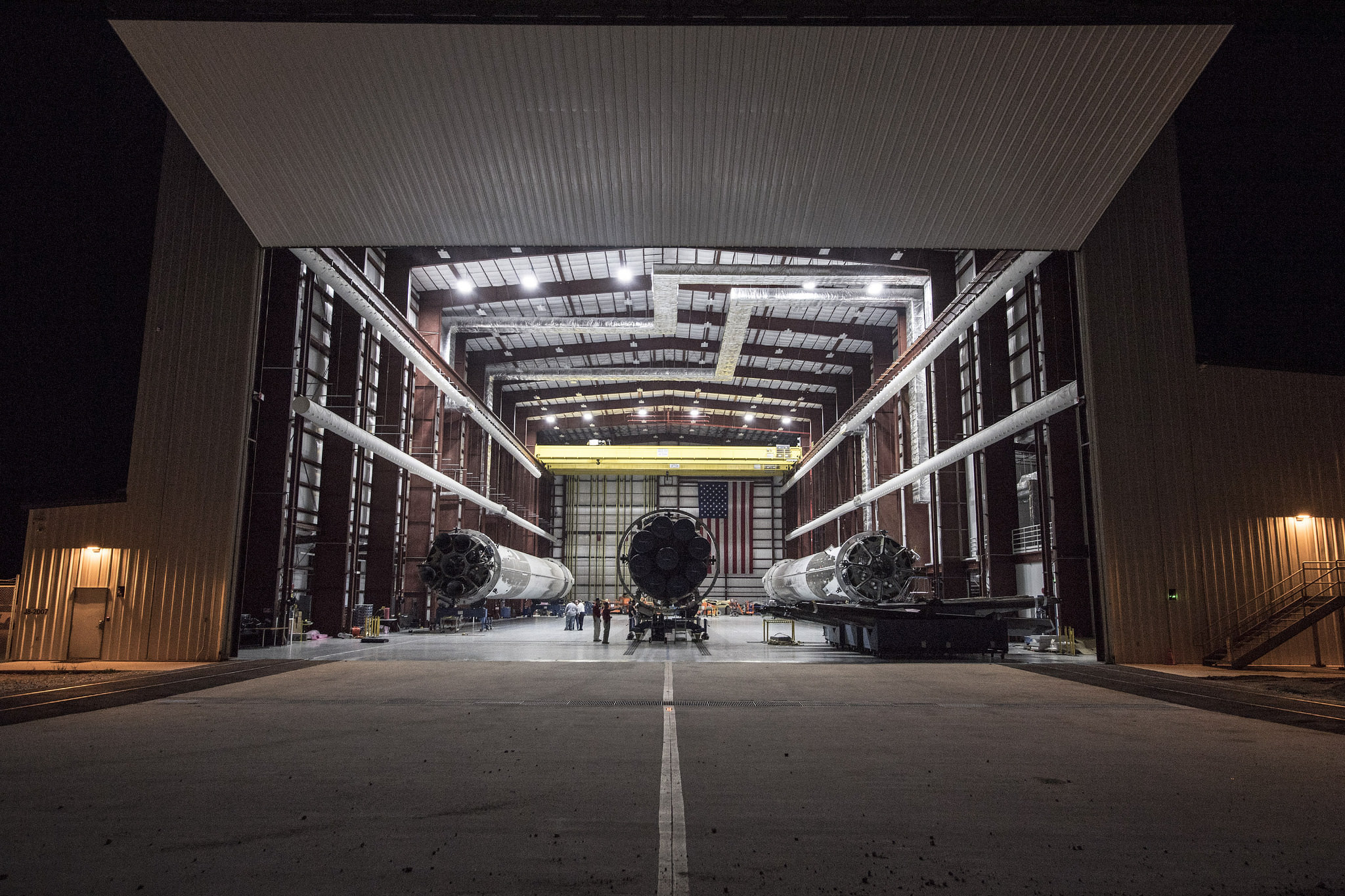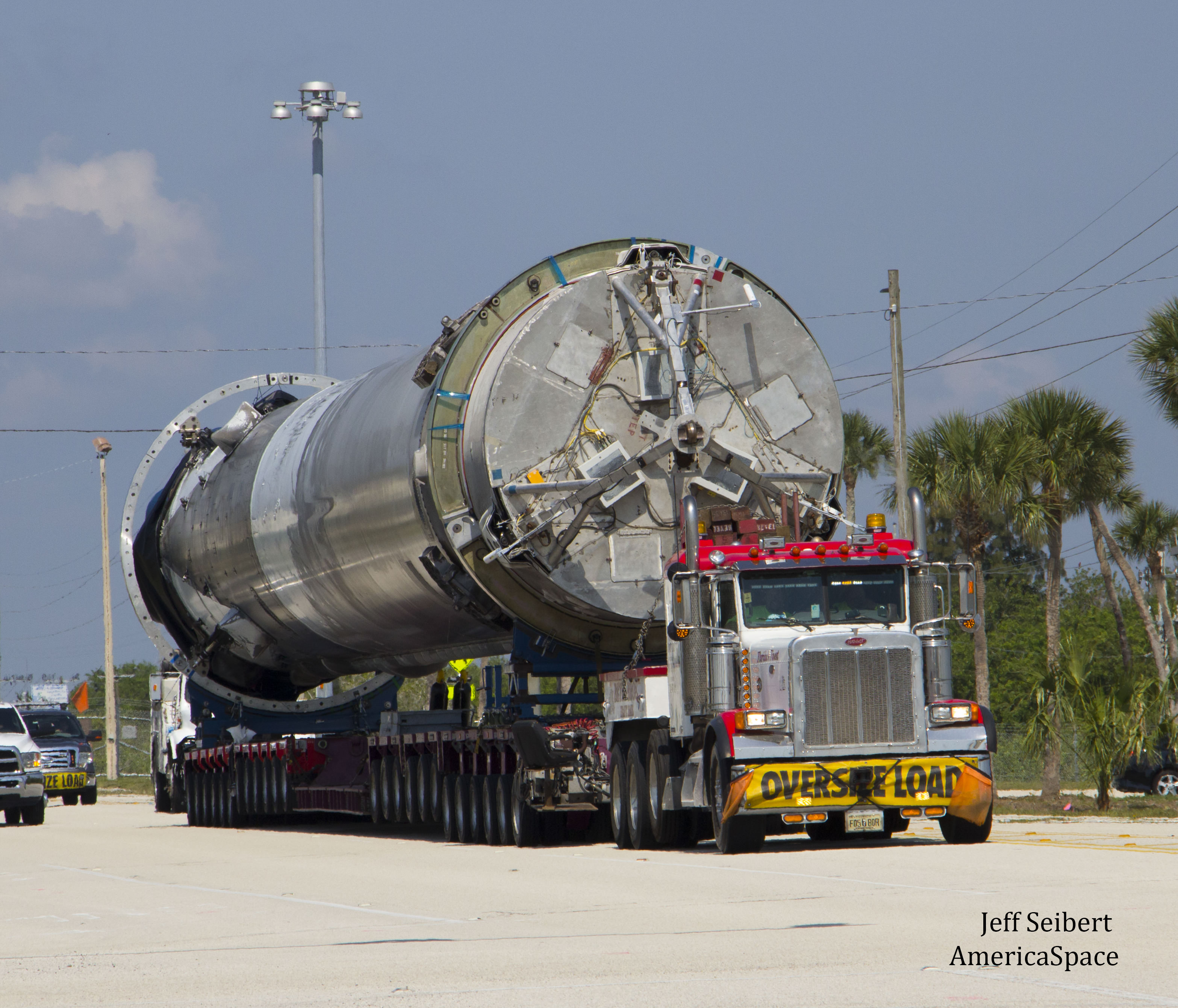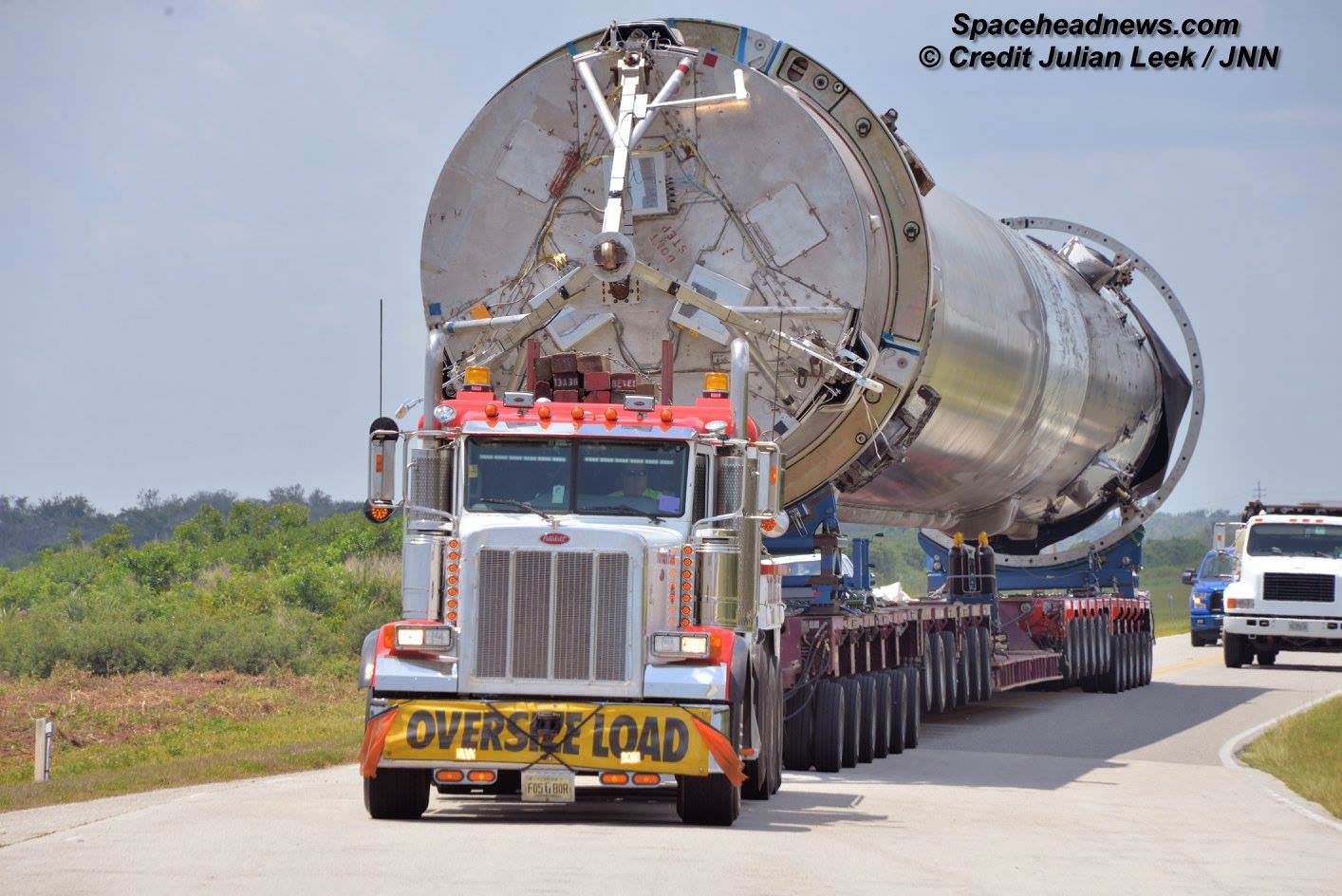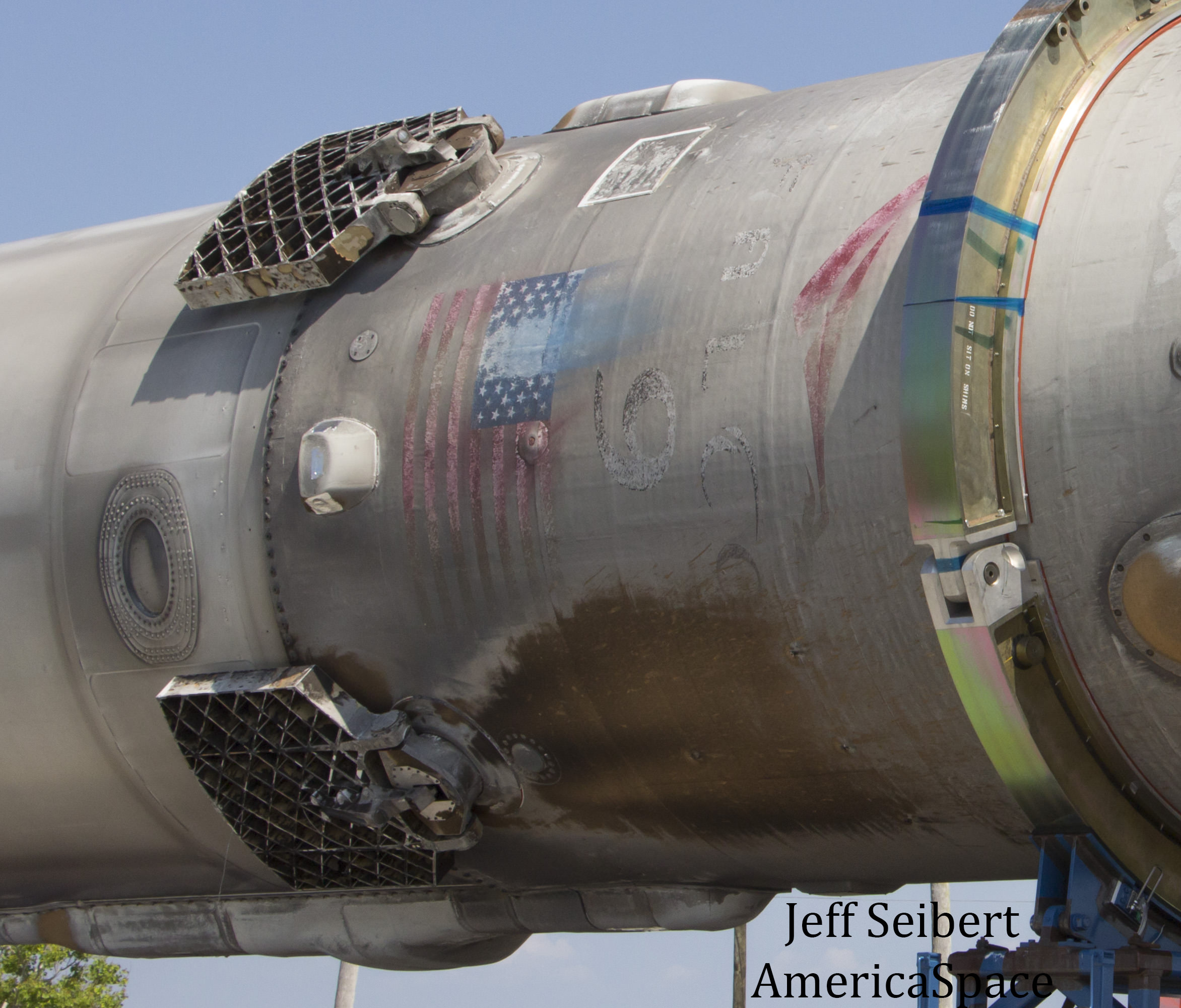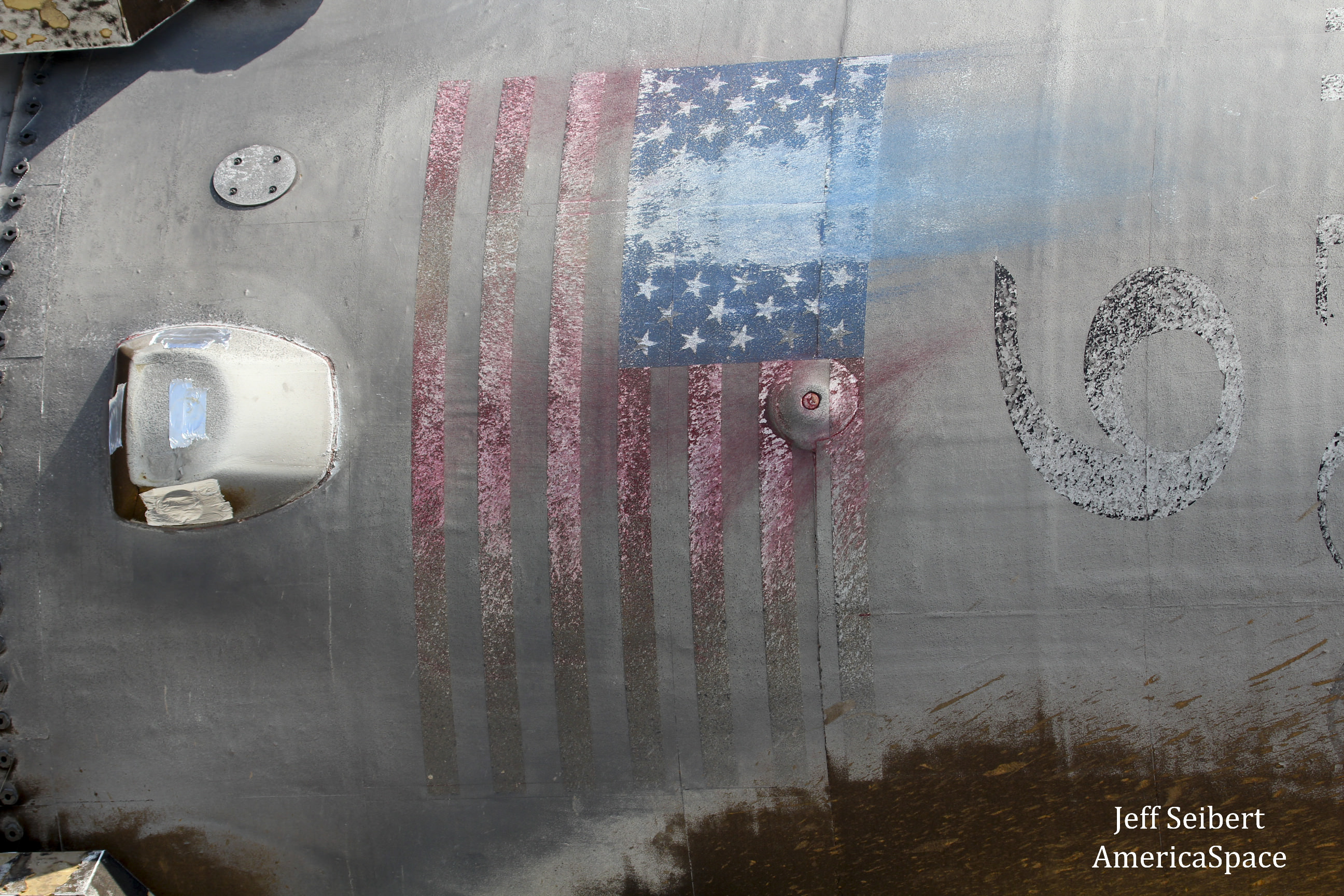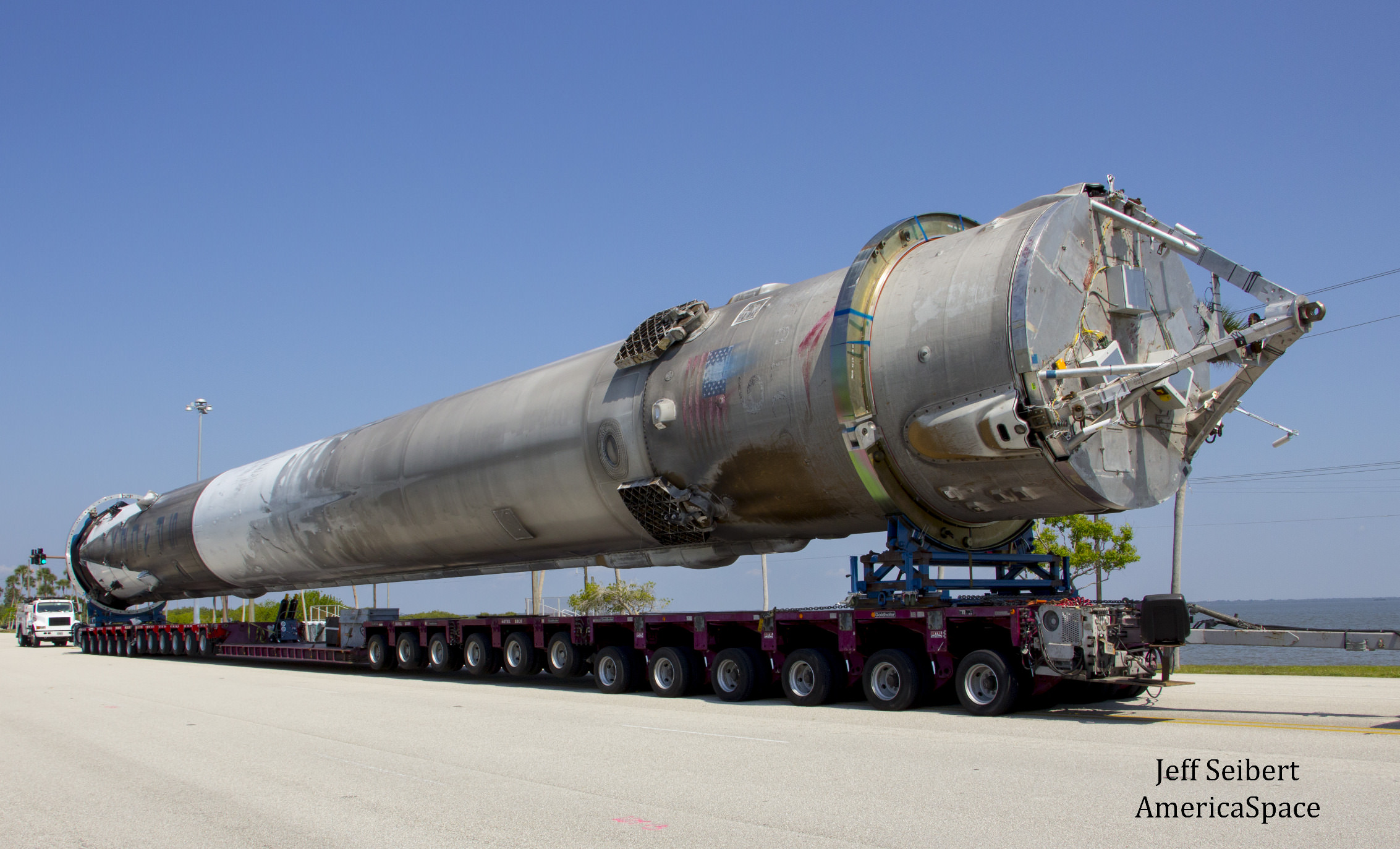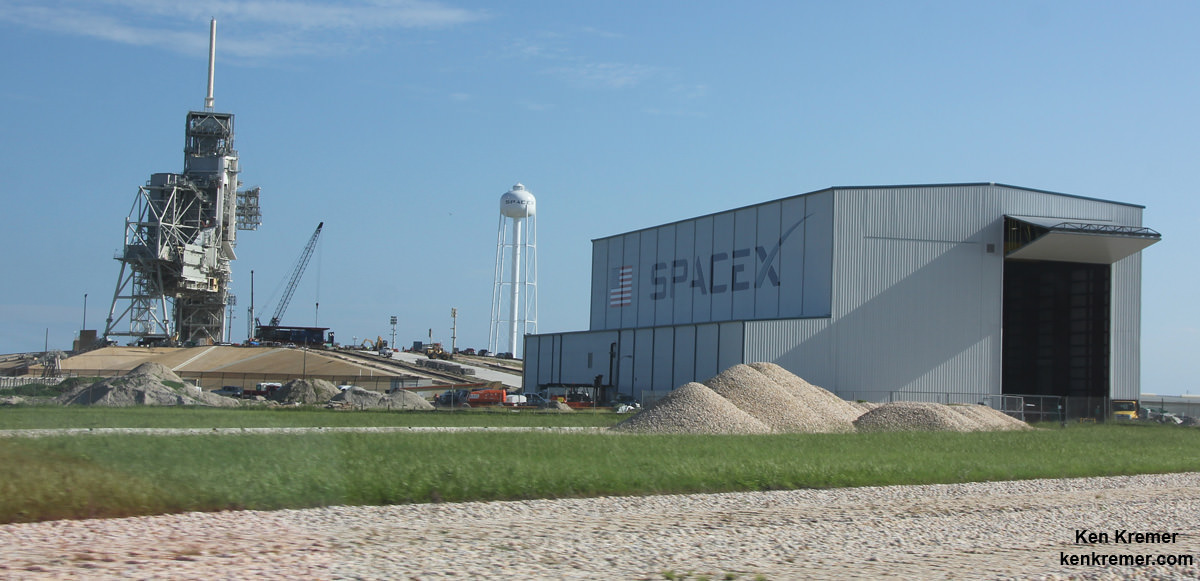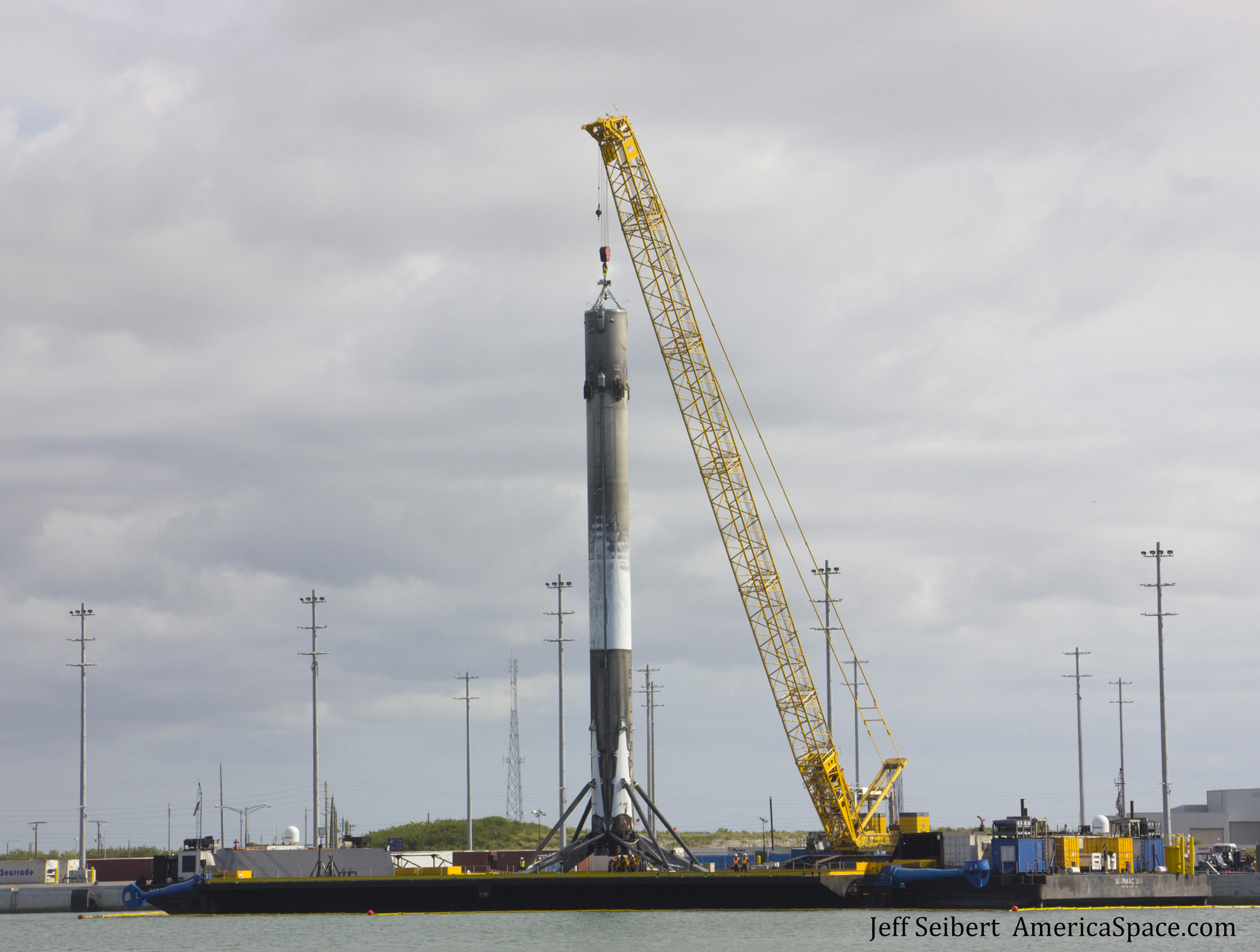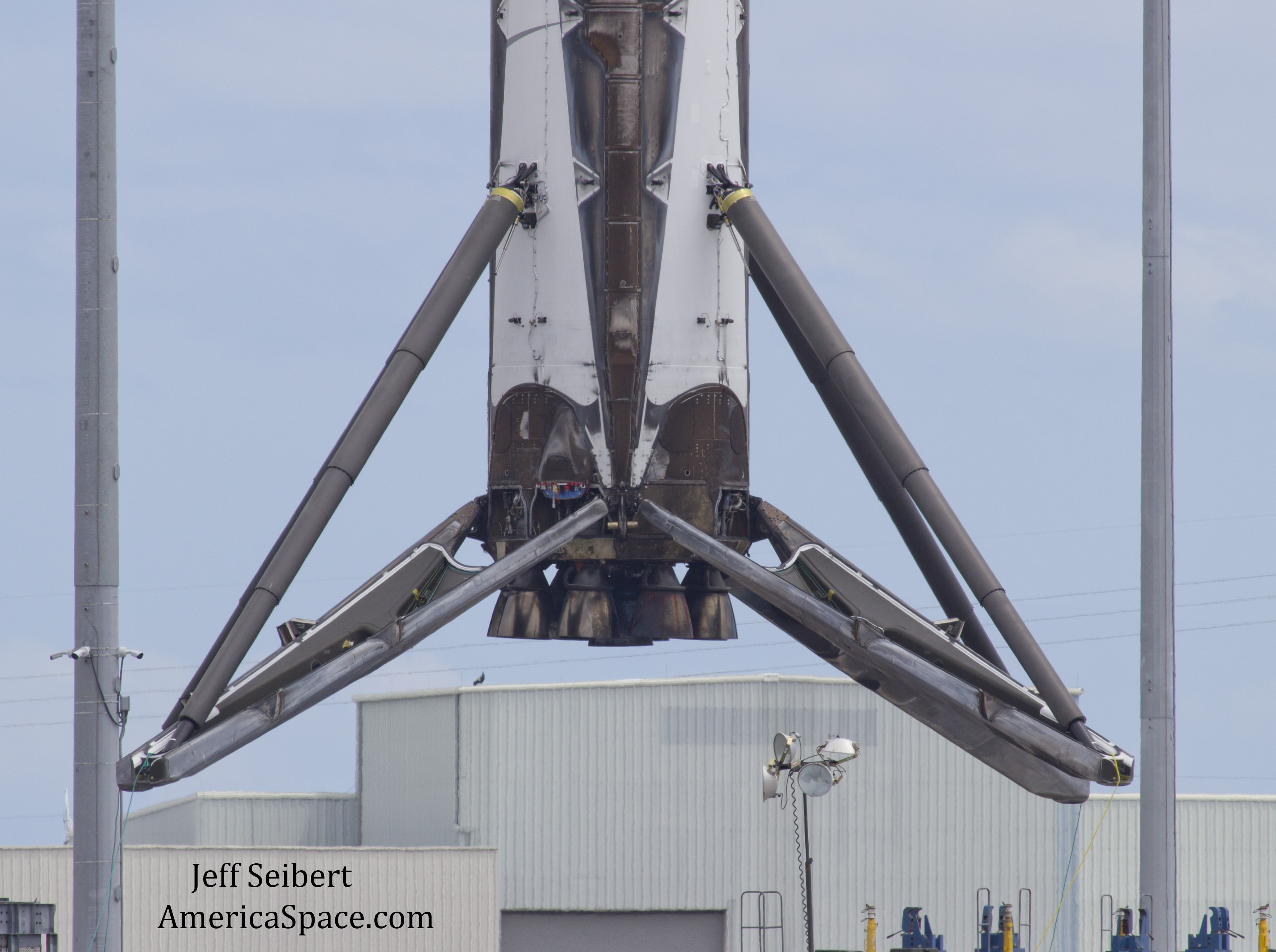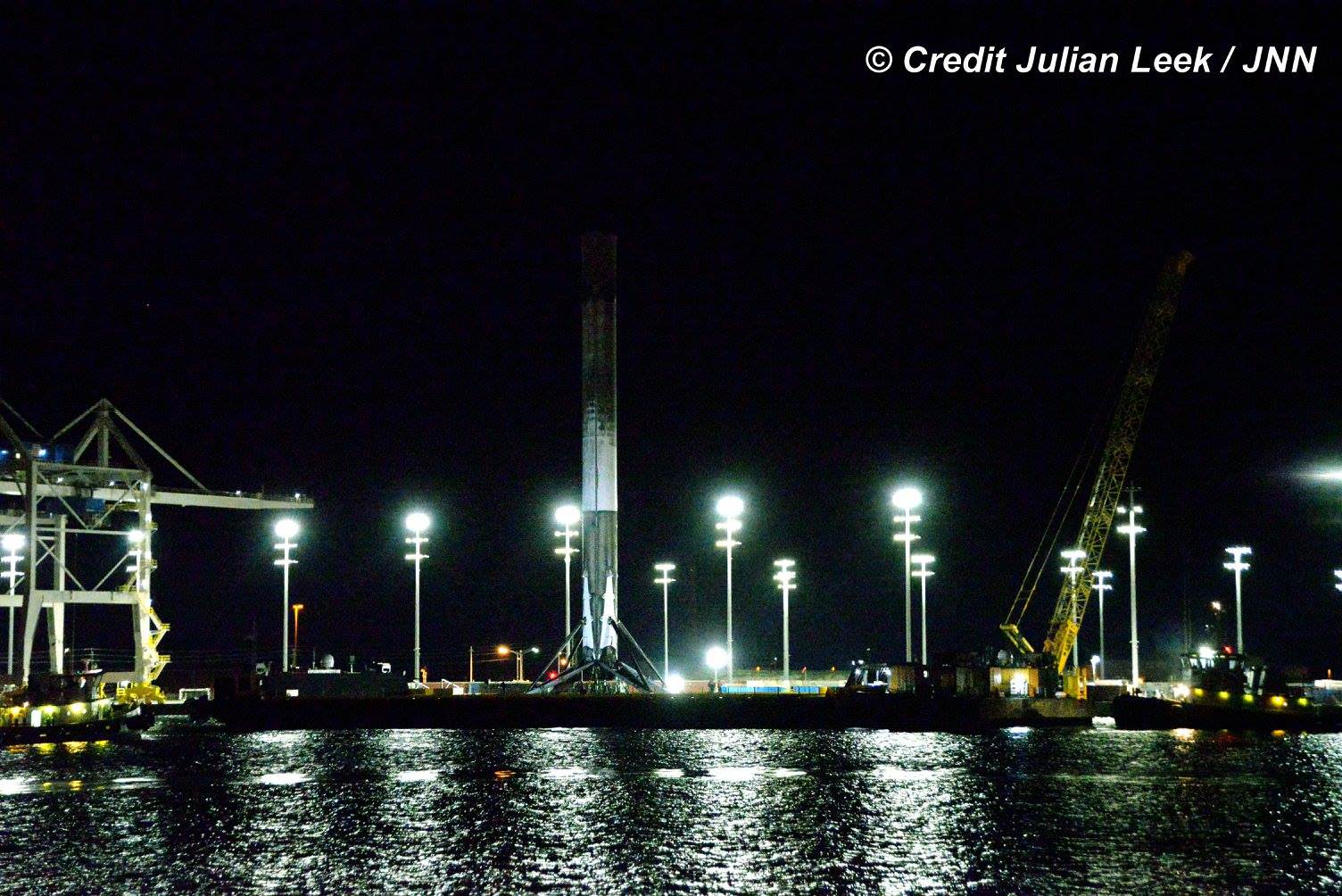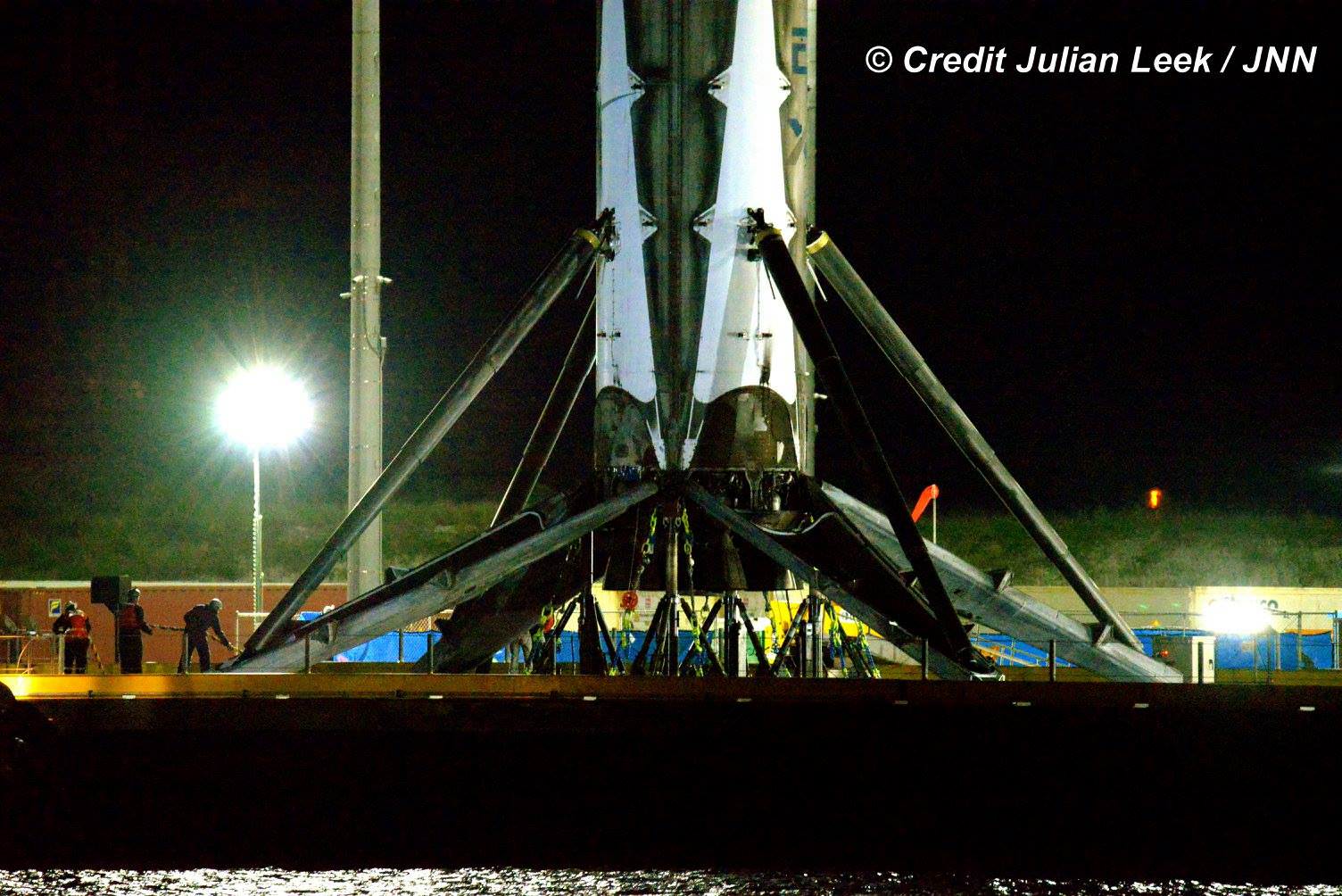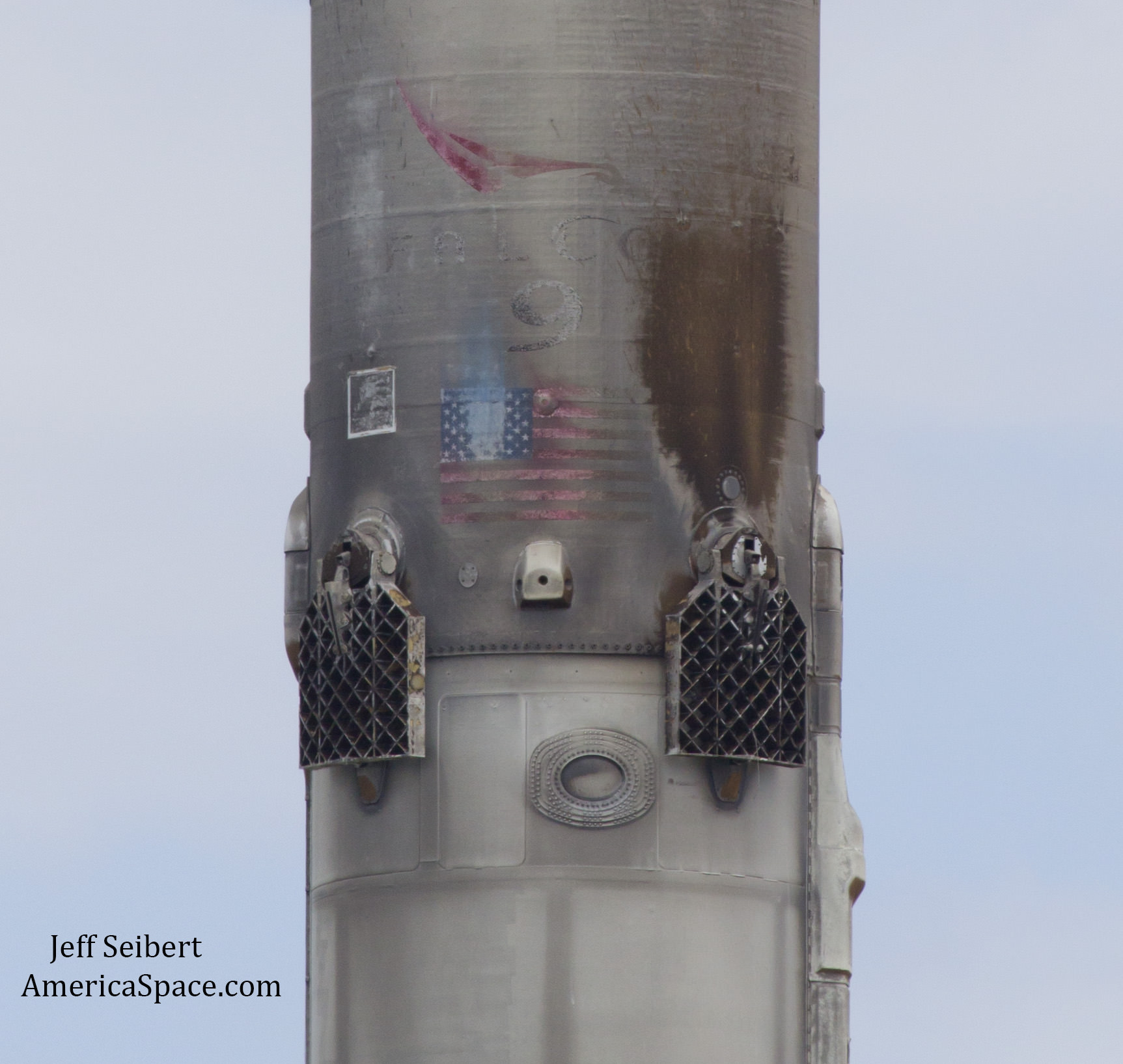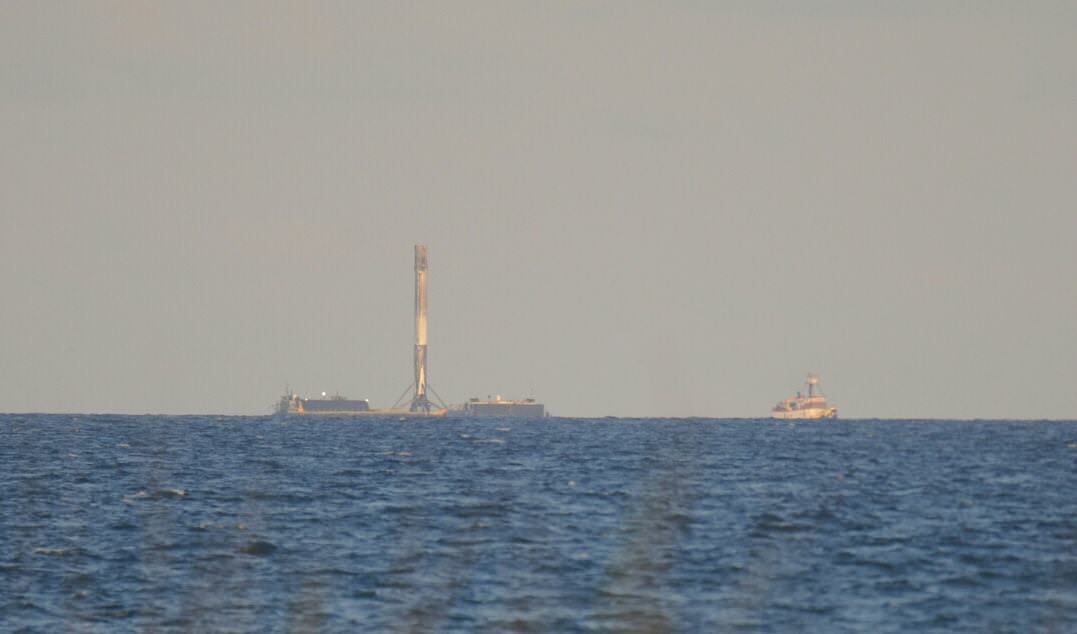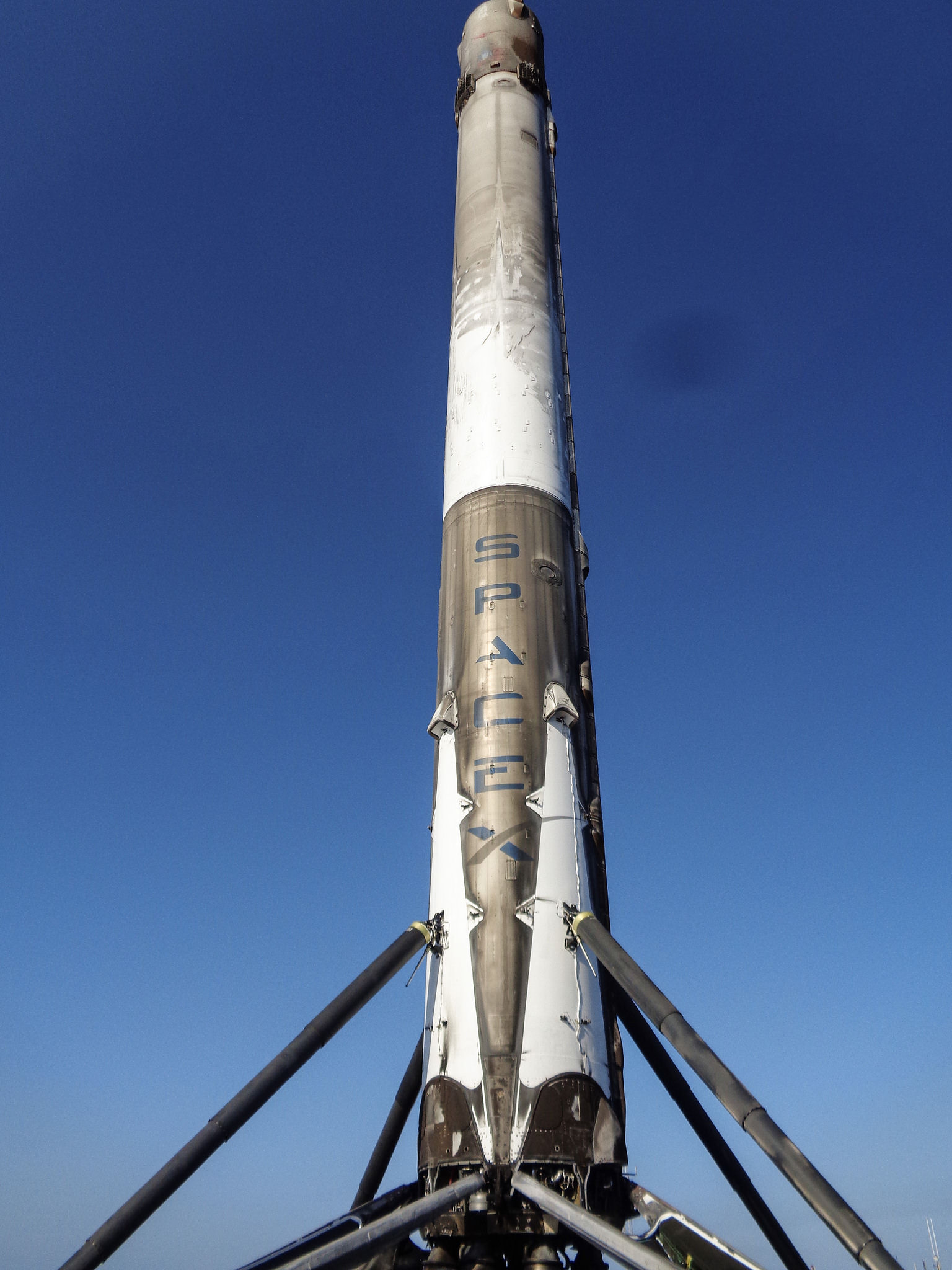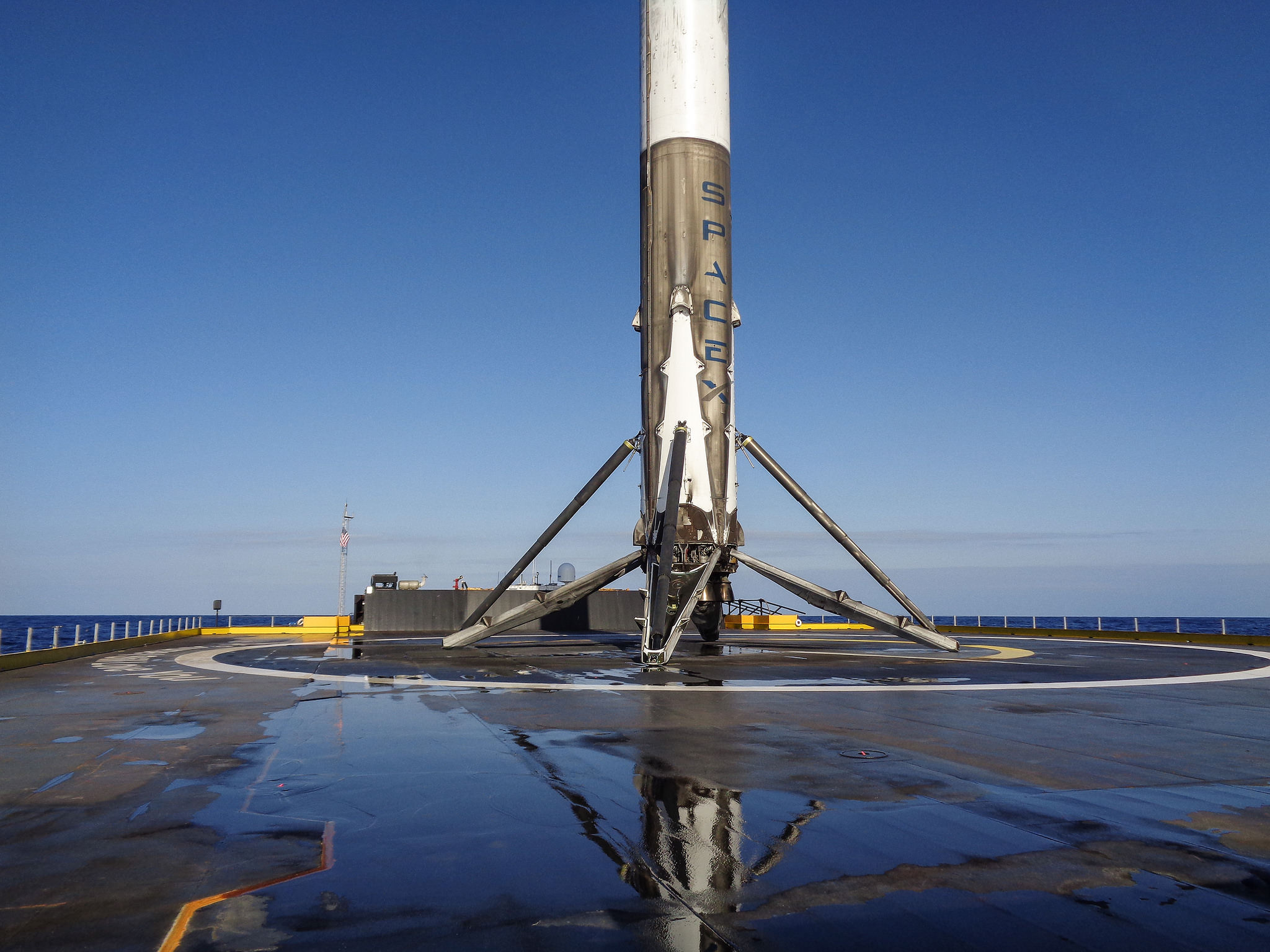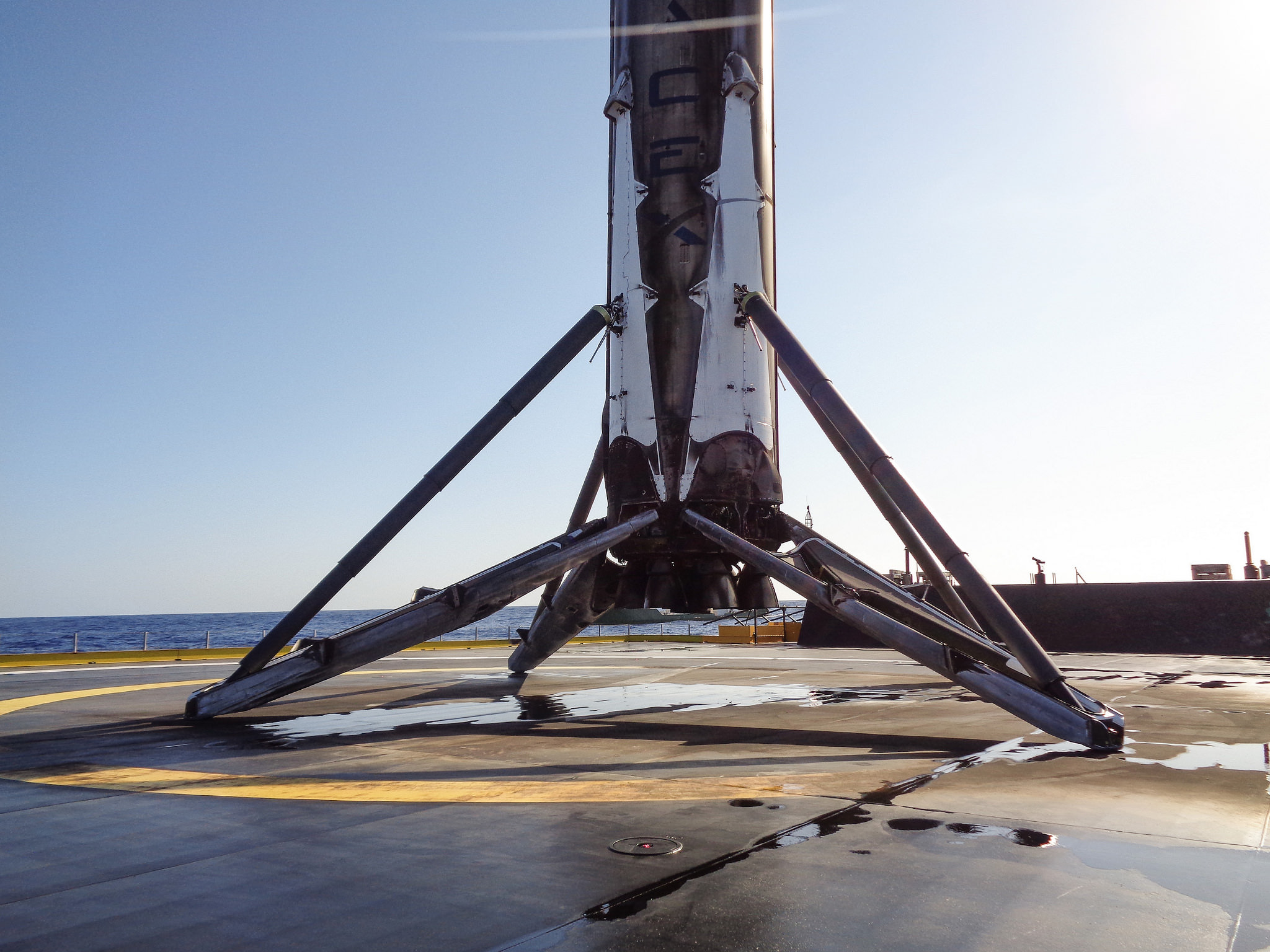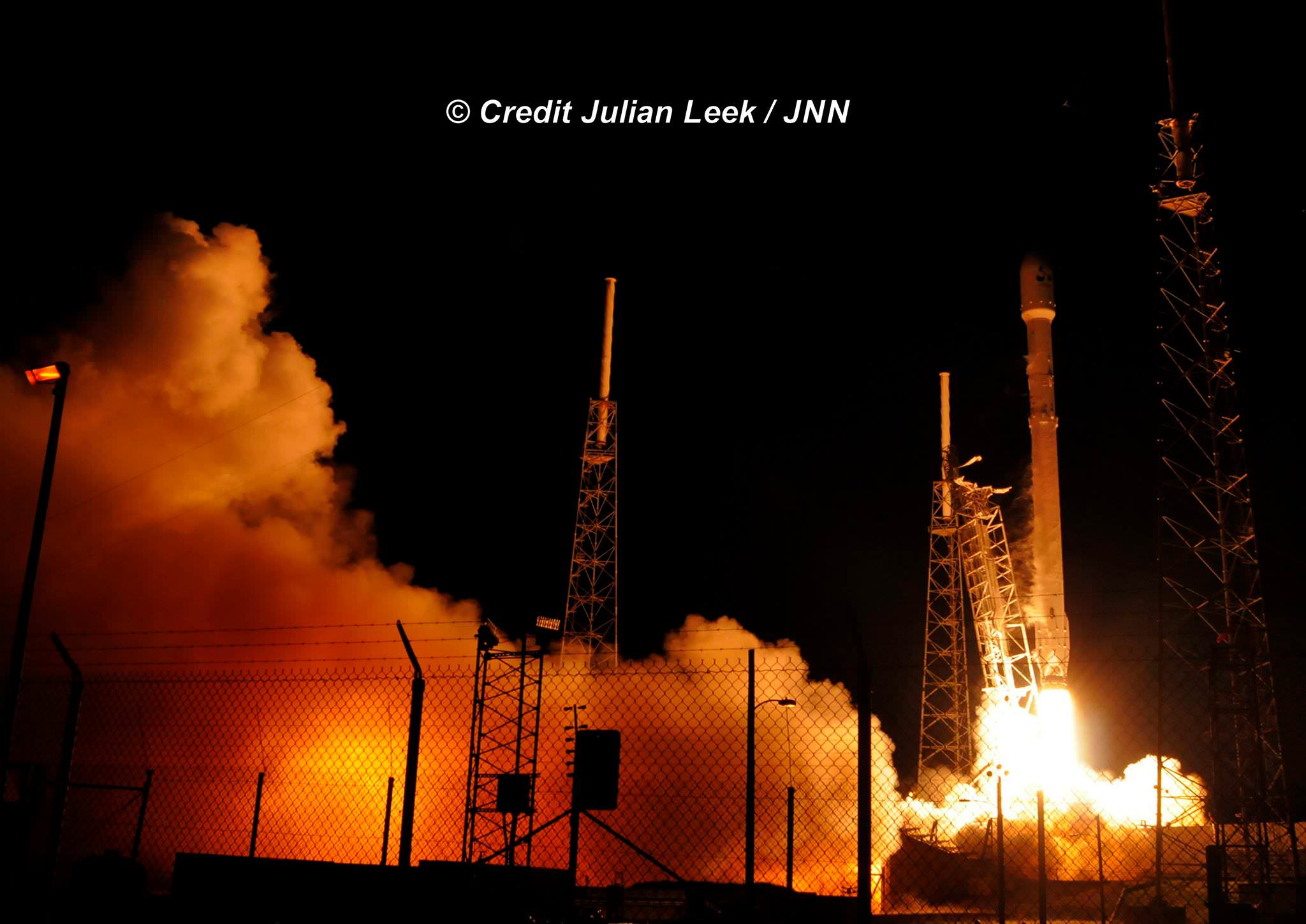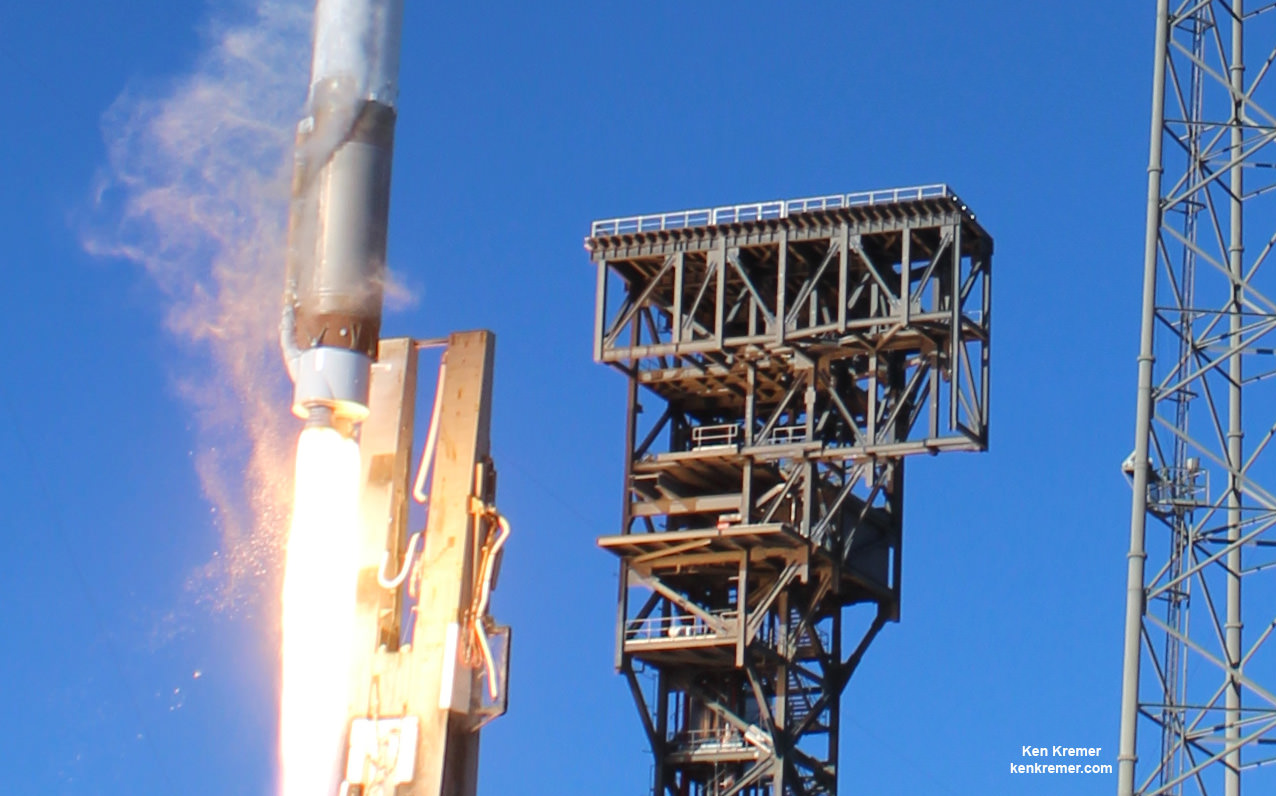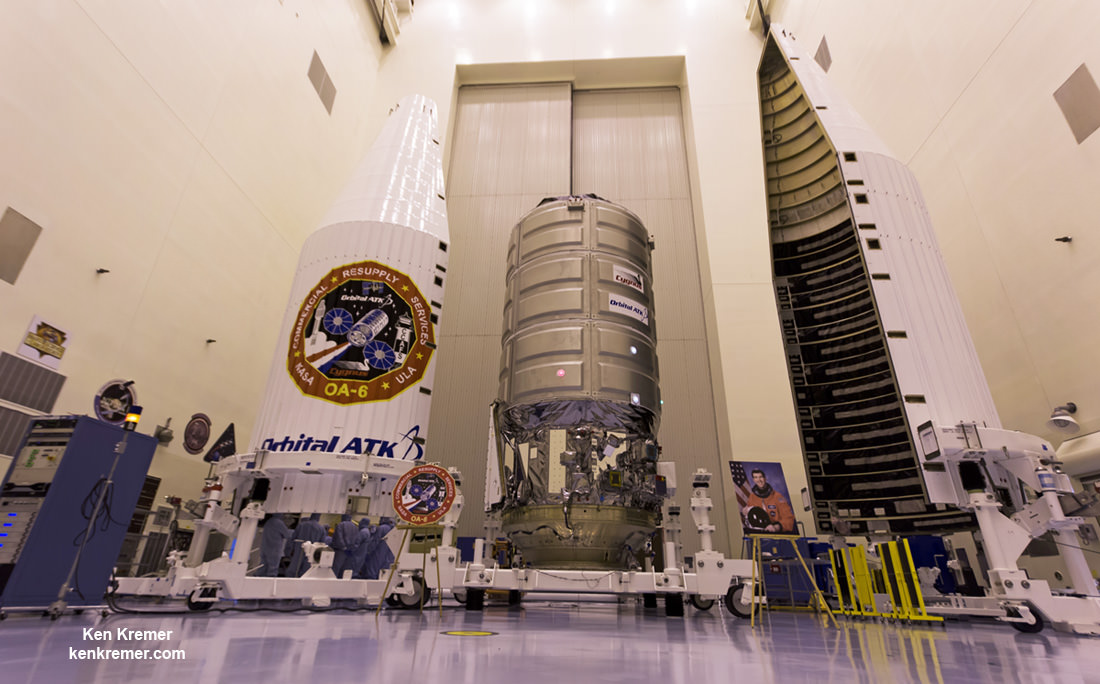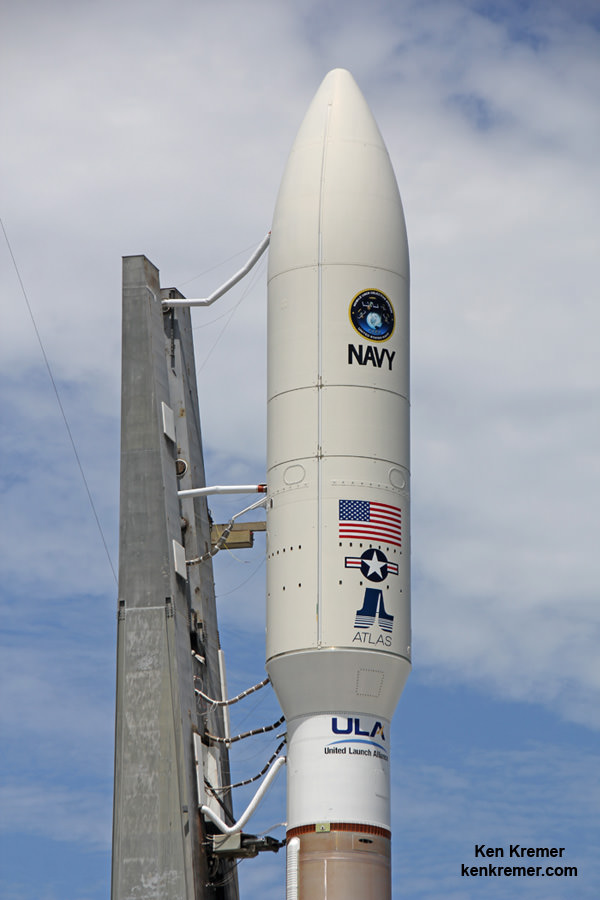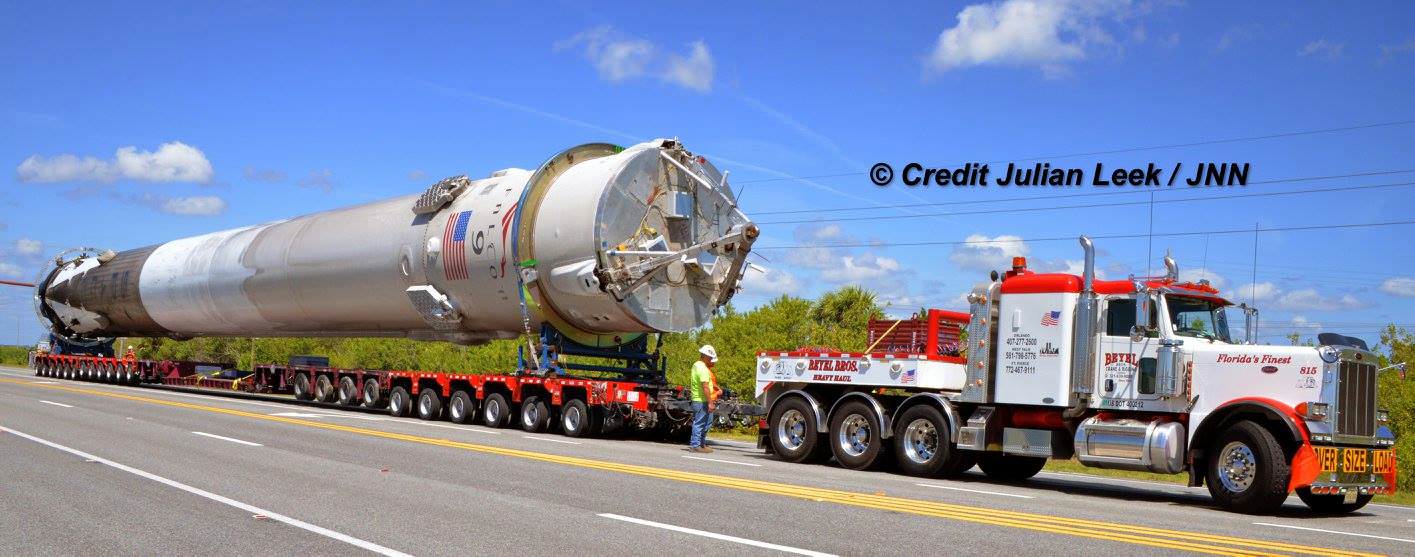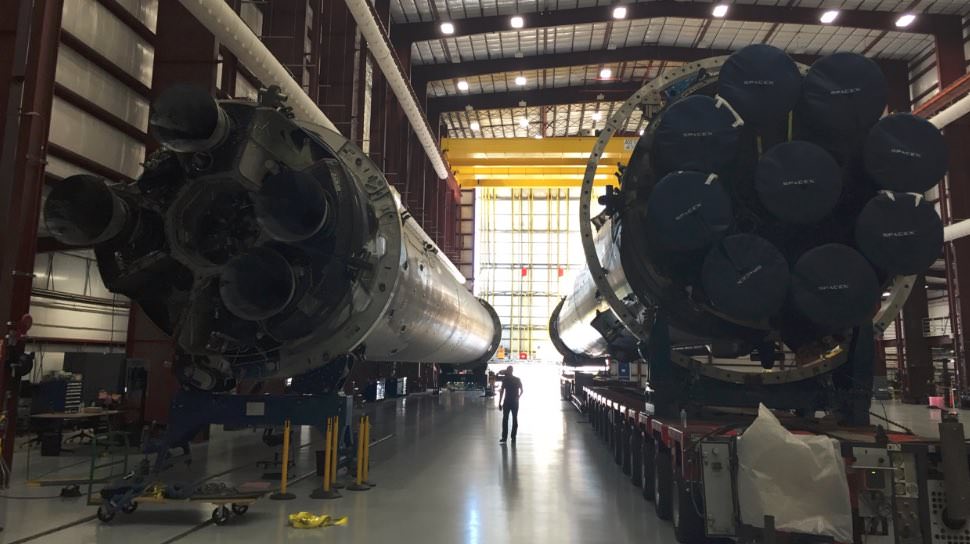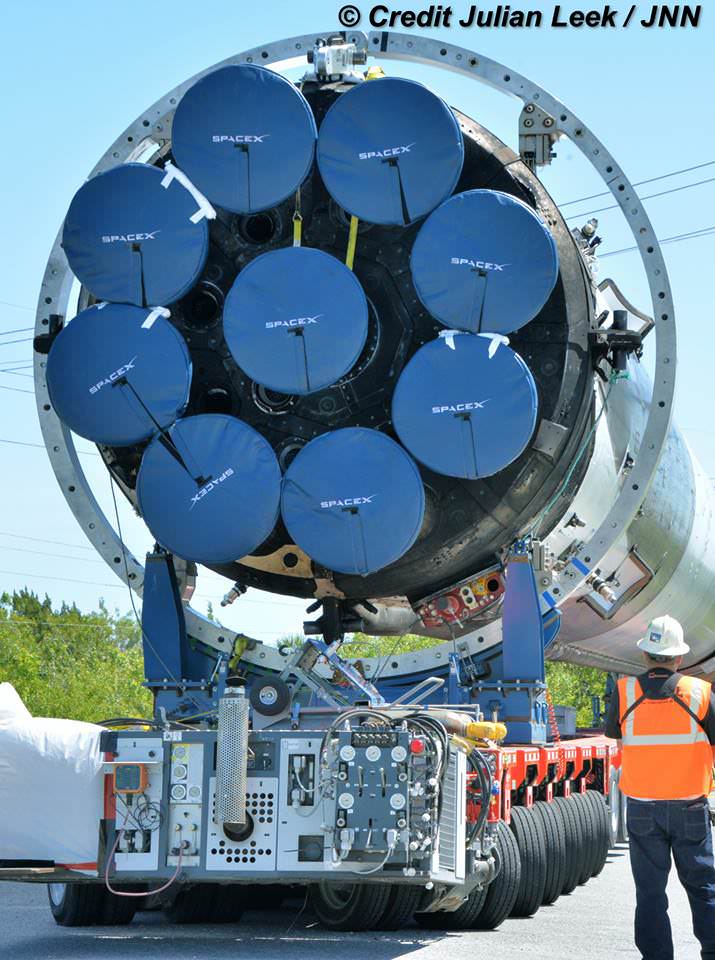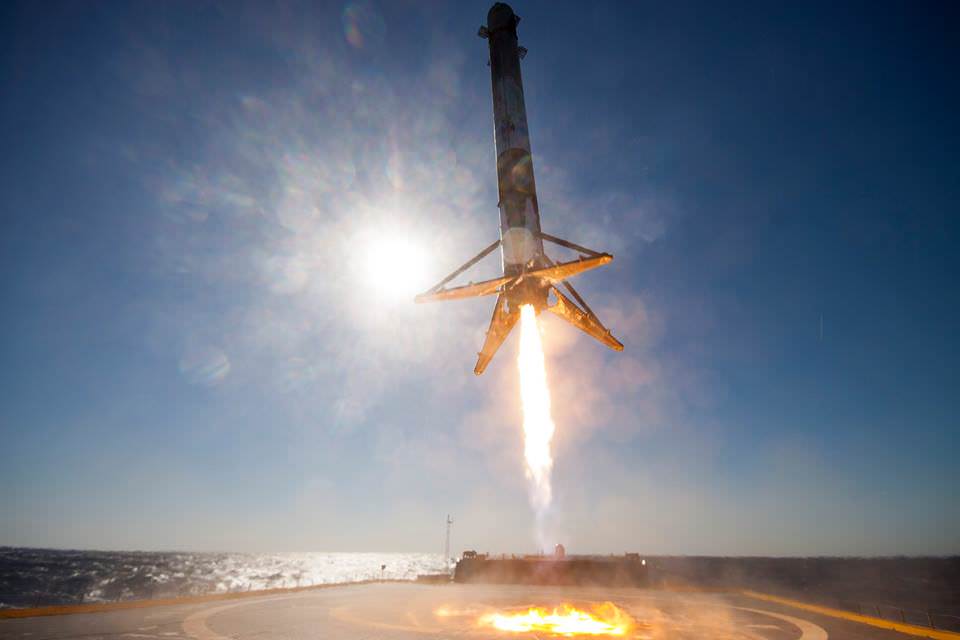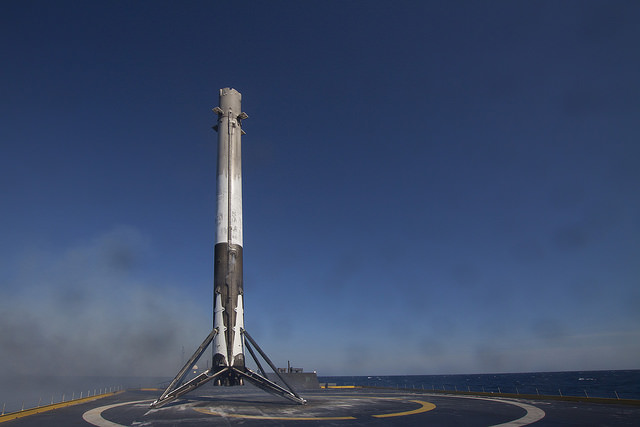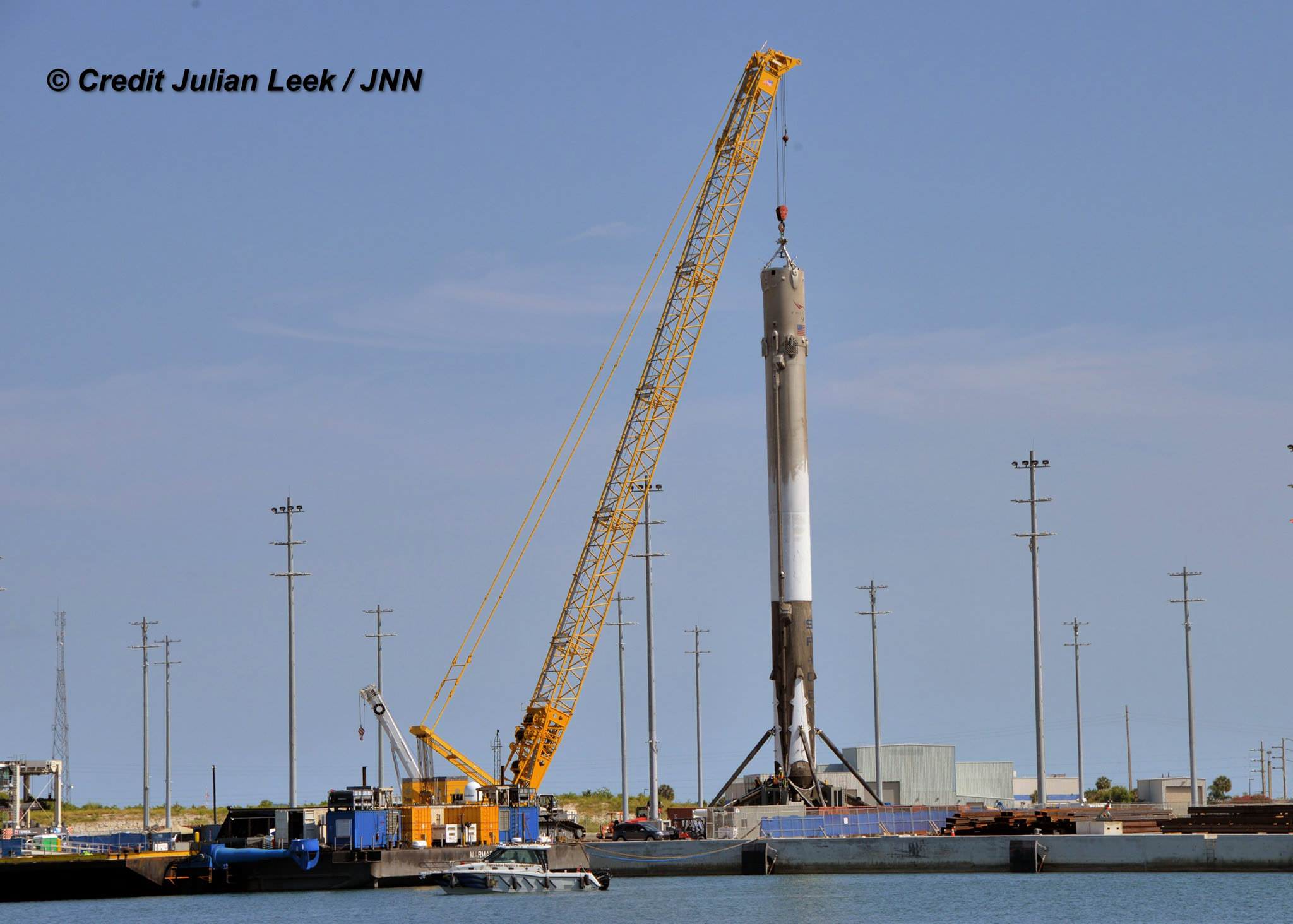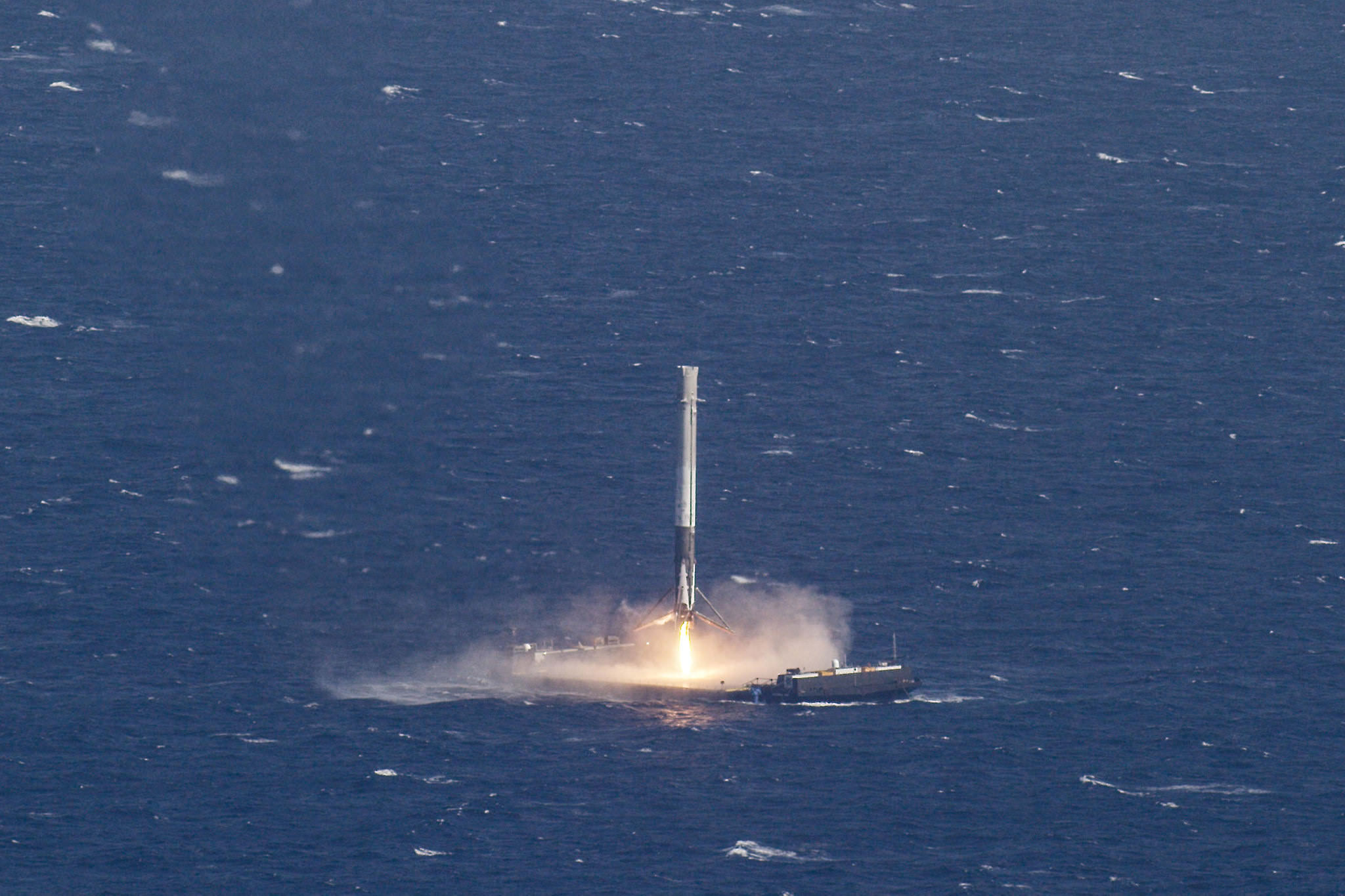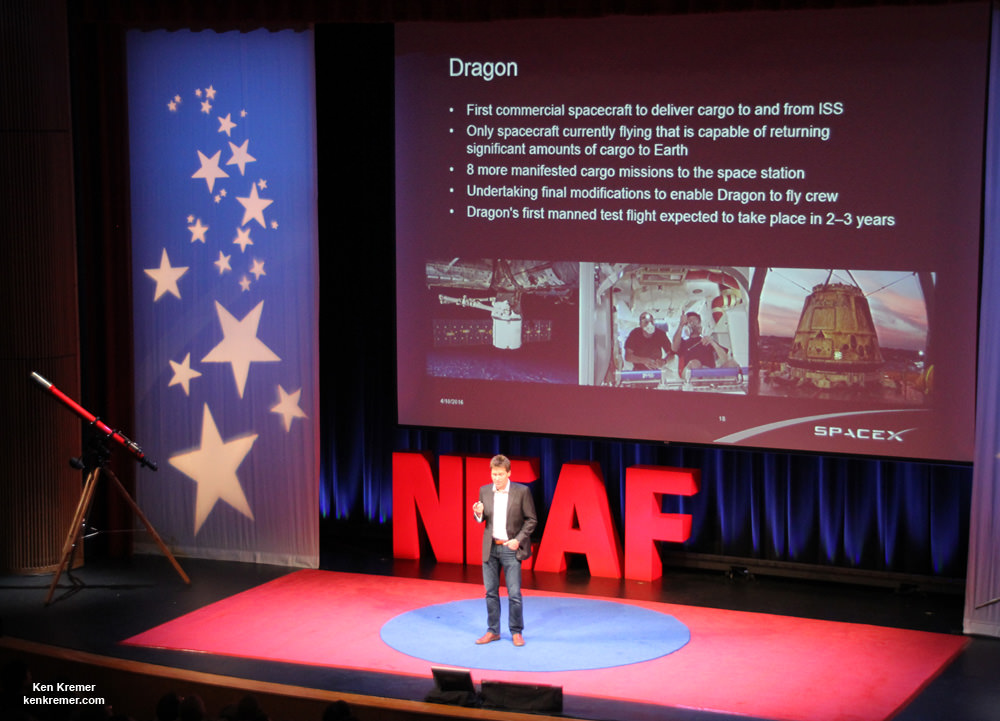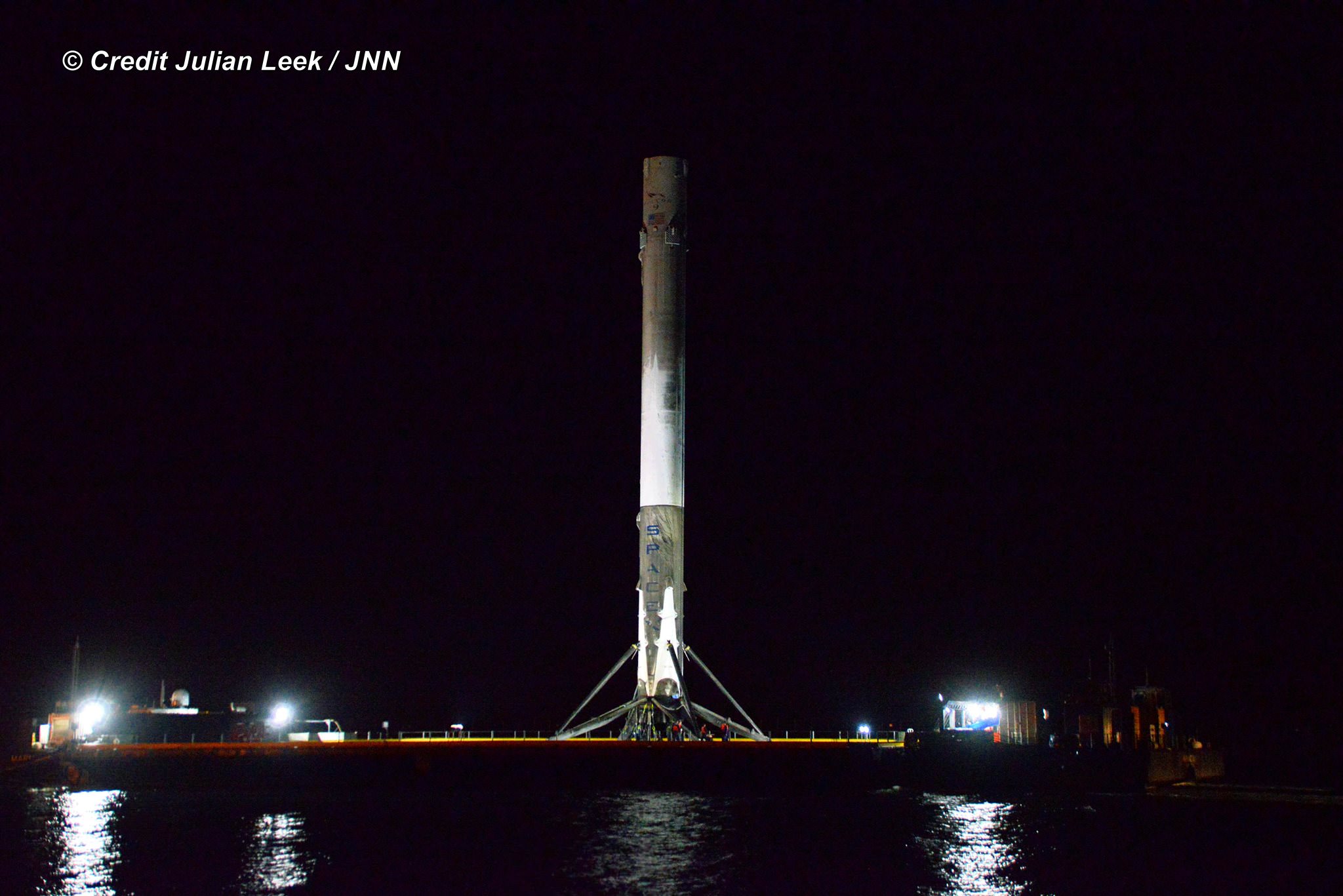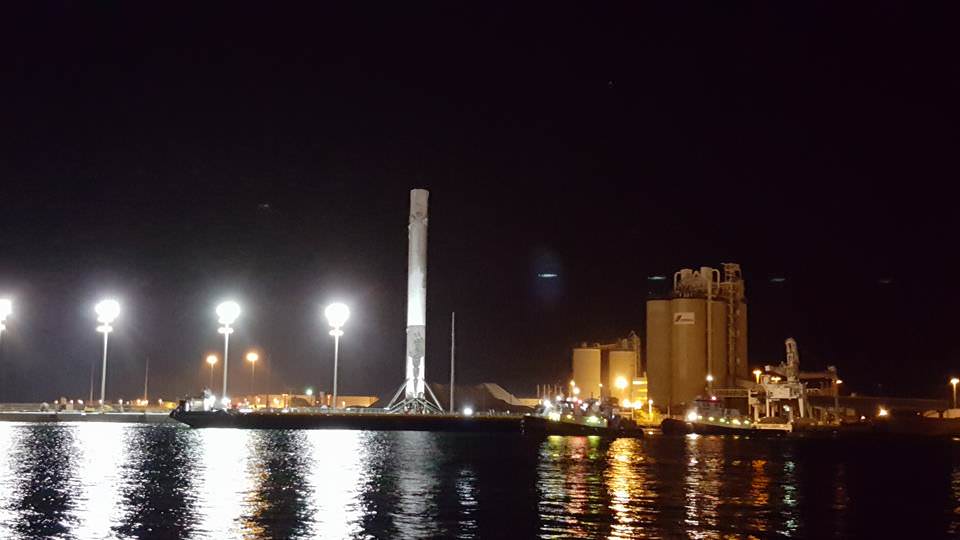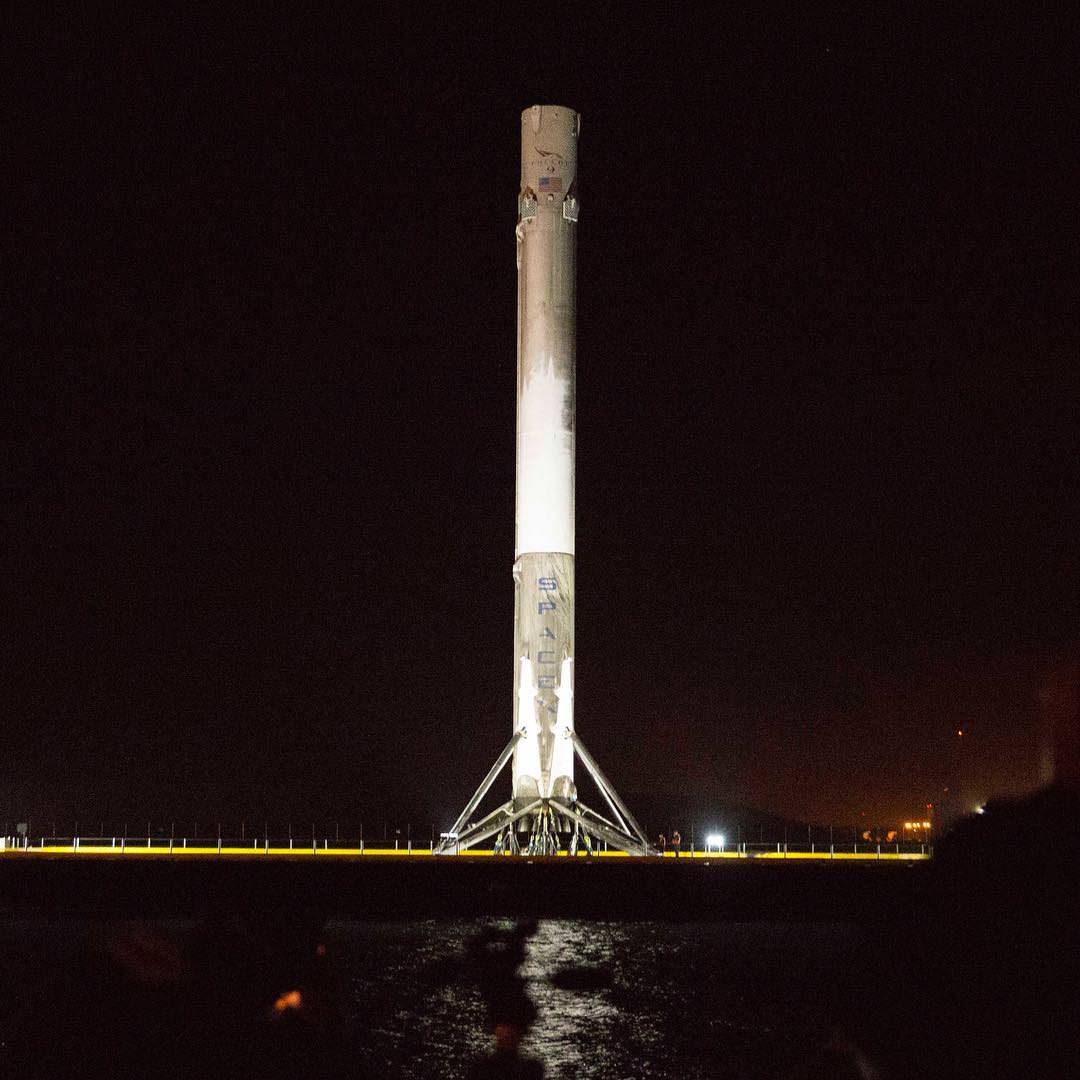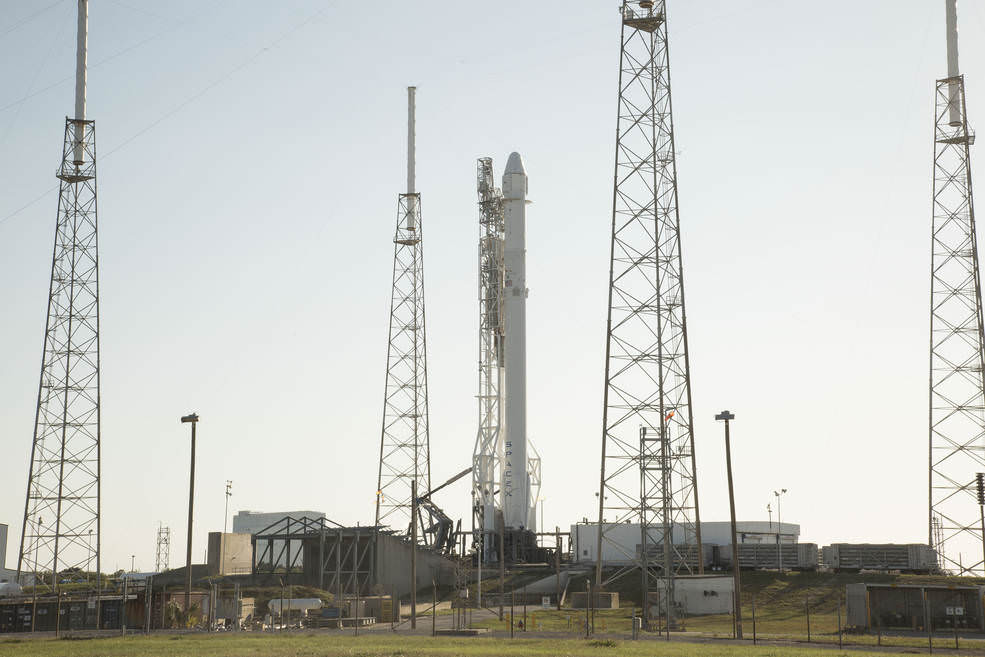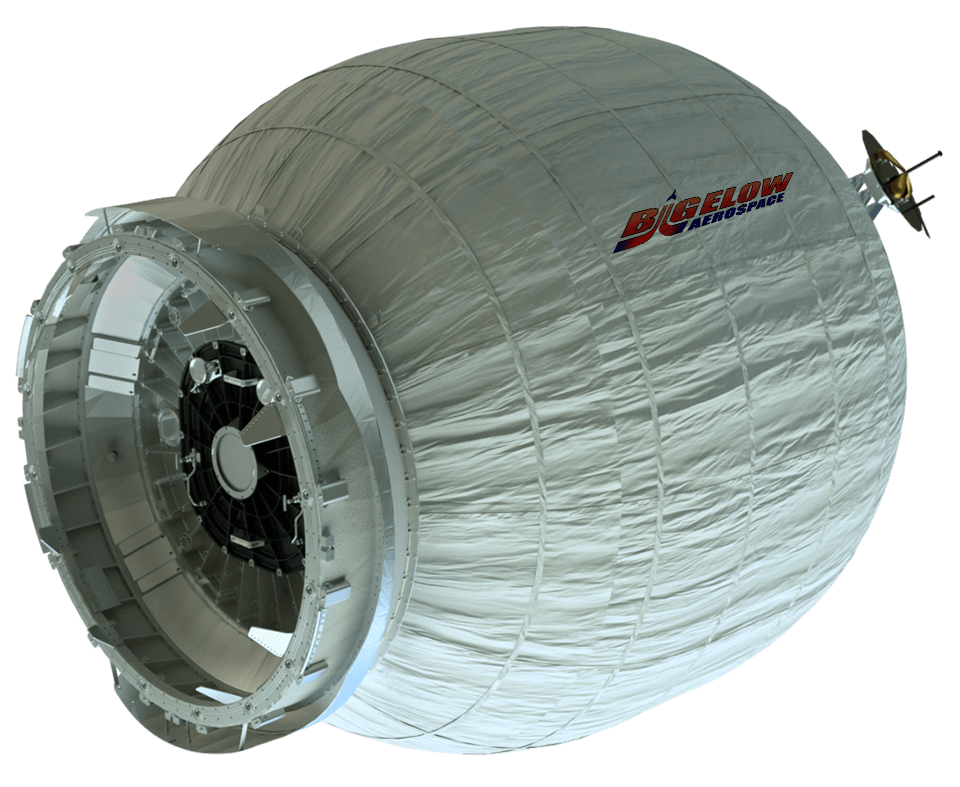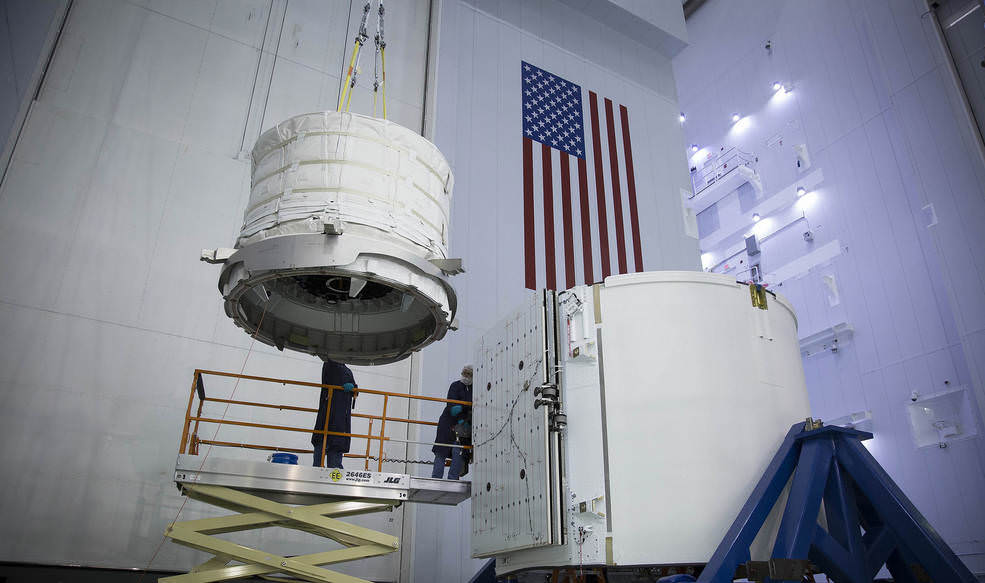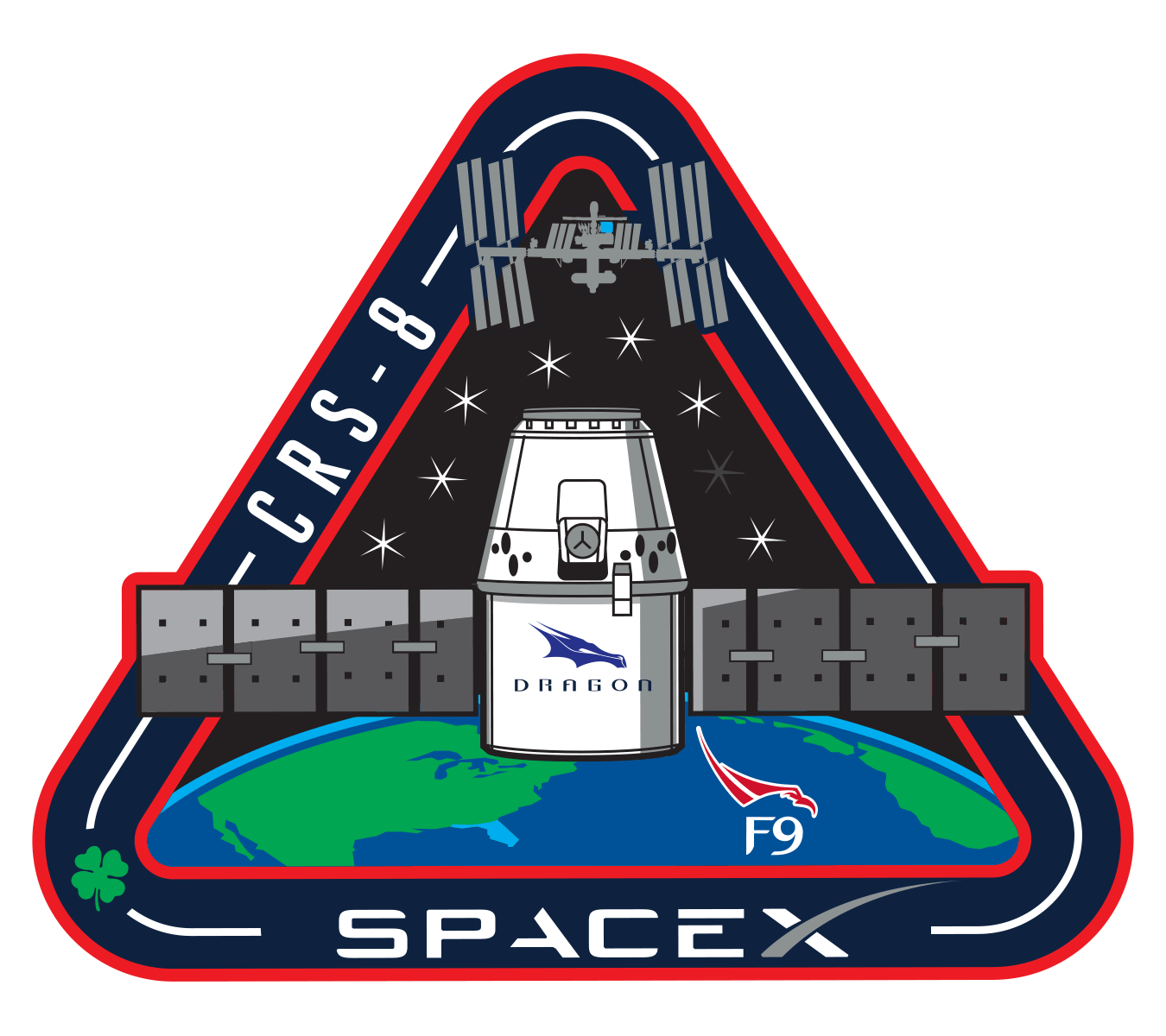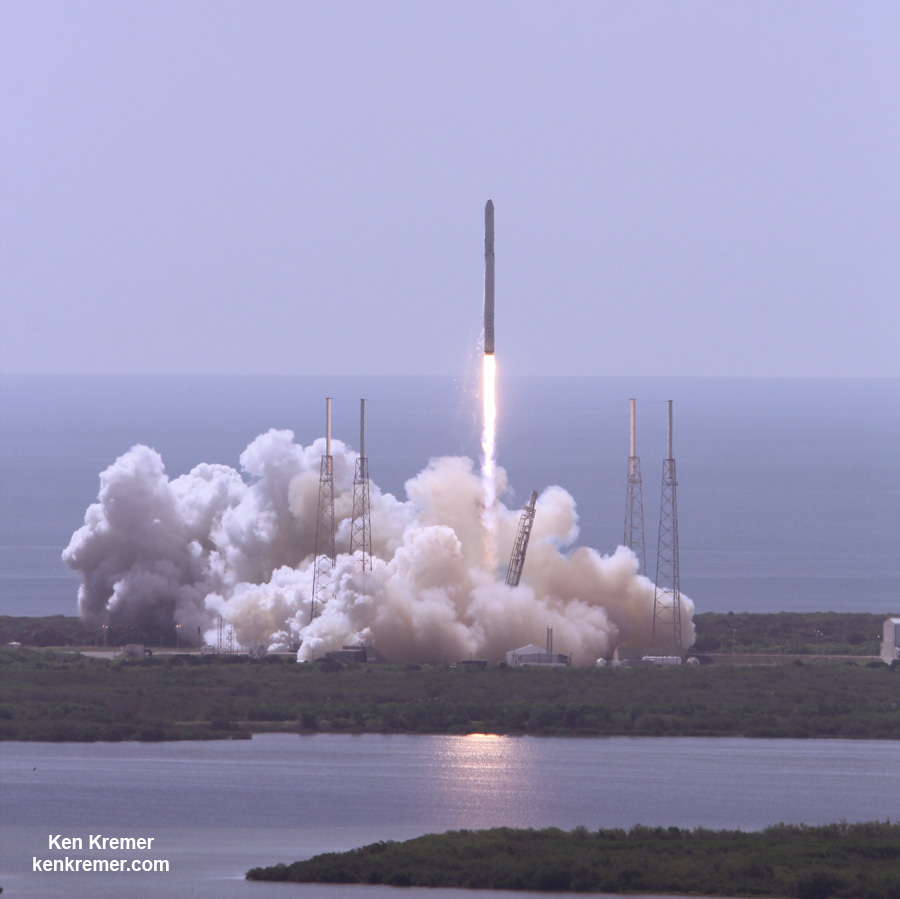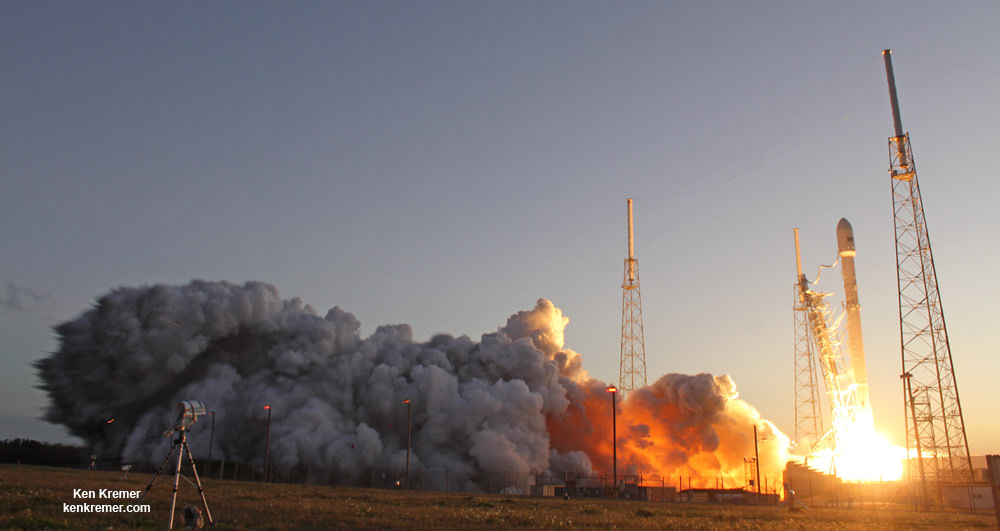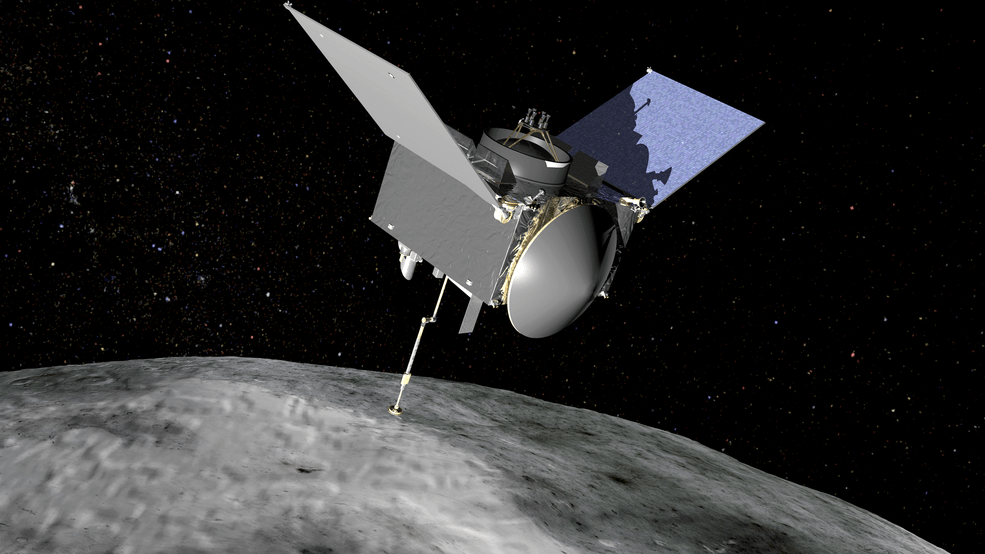
America’s first ever mission designed to retrieve samples from the surface of an asteroid and return them to Earth – OSIRIS-Rex – has arrived at its Florida launch base for processing to get ready for blastoff barely three and one half months from today.
NASA’s Origins, Spectral Interpretation, Resource Identification, Security – Regolith Explorer (OSIRIS-REx) spacecraft will launch from Space Launch Complex 41 at Cape Canaveral Air Force Station on a United Launch Alliance Atlas V rocket on September 8.
OSIRIS-REx was flown to NASA’s Kennedy Space Center from prime contractor Lockheed Martin’s facility near Denver, Colorado via Buckley Air Force Base. It arrived safely inside its shipping container on Friday, May 20 aboard an Air Force C-17 at the Shuttle Landing Facility.
It was soon offloaded and transported to Kennedy’s Payloads Hazardous Servicing Facility, or PHSF. OSIRIS-REx came out of the shipping container today, Saturday, May 21.
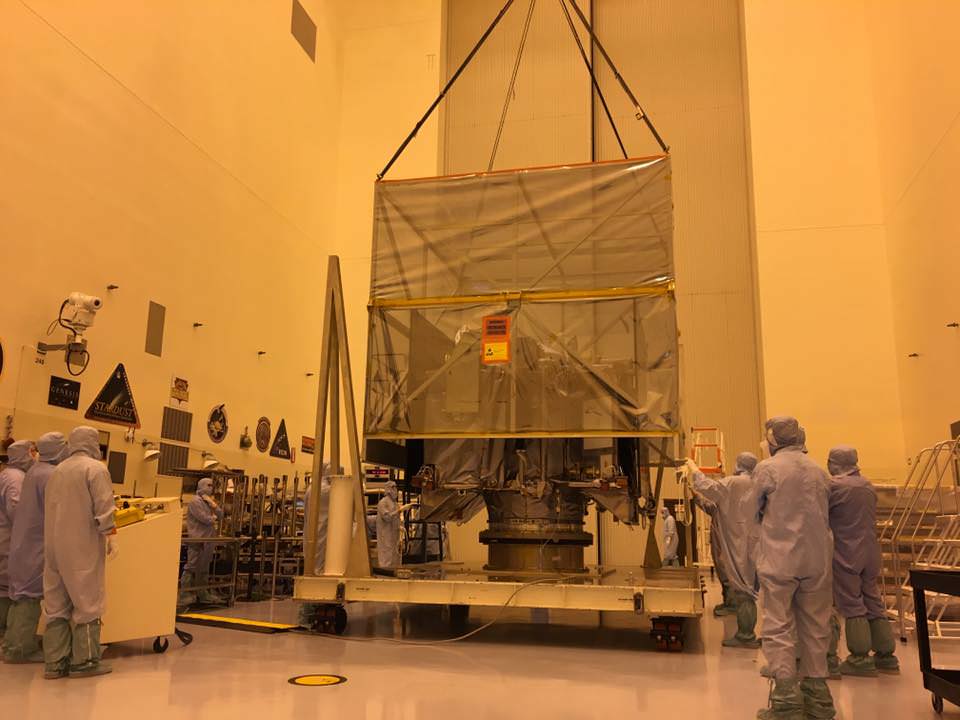
A busy first week of processing starts Monday.
NASA officials say it will go onto a rotation fixture on Monday, May 23, have a spin test May 24-25. It then will be hoisted onto a dolly May 26 for other upcoming activities. A partial solar array deployment test is scheduled on May 31.
The PHFS clean room was most recently used to process the Orbital ATK Cygnus space station resupply vehicles. It has also processed NASA interplanetary probes such as the Curiosity Mars Science Laboratory mission.
The spacecraft will reach Bennu in 2018. Once within three miles of the asteroid, the spacecraft will begin six months of comprehensive surface mapping of the carbonaceous asteroid.
After analyzing the data returned, the science team then will select a site where the spacecraft’s robotic sampling arm will grab a sample of regolith and rocks. The regolith may record the earliest history of our solar system.
Engineers will command the spacecraft to gradually move on closer to the chosen sample site, and then extend the arm to snatch the pristine samples.
OSIRIS-REx will gather rocks and soil and bring at least a 60-gram (2.1-ounce) sample back to Earth in 2023 for study by researchers here with all the most sophisticated science instruments available.
The mission will help scientists investigate how planets formed and how life began, as well as improve our understanding of asteroids that could impact Earth.
Bennu is an unchanged remnant from the collapse of the solar nebula and birth of our solar system some 4.5 billion years ago, little altered over time.
Bennu is a near-Earth asteroid and was selected for the sample return mission because it “could hold clues to the origin of the solar system and host organic molecules that may have seeded life on Earth,” says NASA.
OSIRIS-Rex will return the largest sample from space since the American and Soviet Union’s moon landing missions of the 1970s.
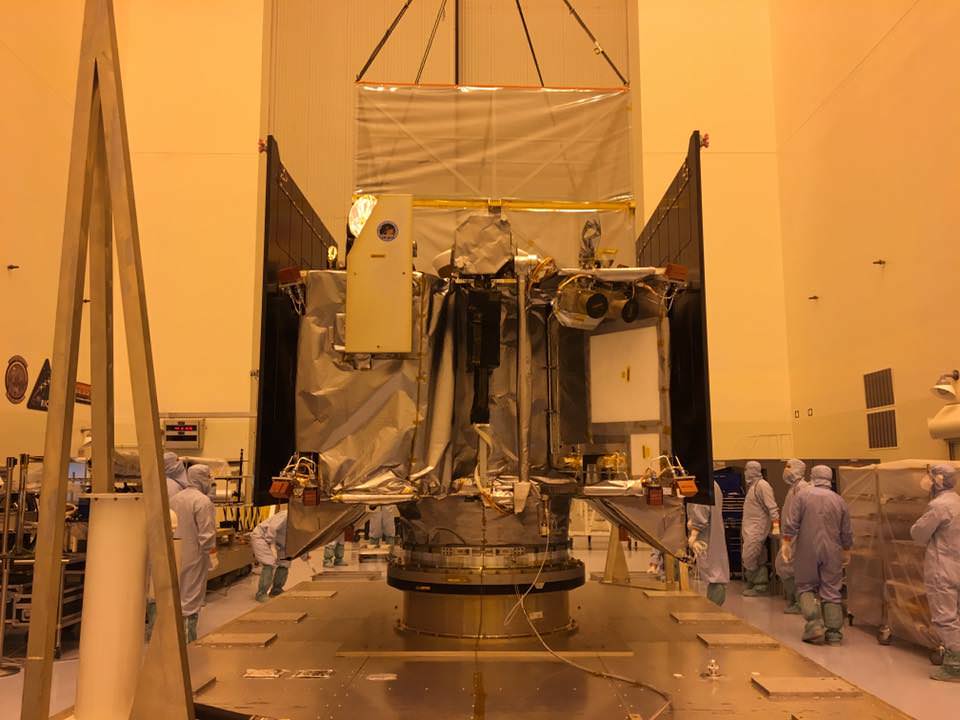
OSIRIS-REx is the third mission in NASA’s New Frontiers Program, following New Horizons to Pluto and Juno to Jupiter, which also launched on Atlas V rockets.
NASA’s Goddard Space Flight Center in Greenbelt, Maryland, is responsible for overall mission management.
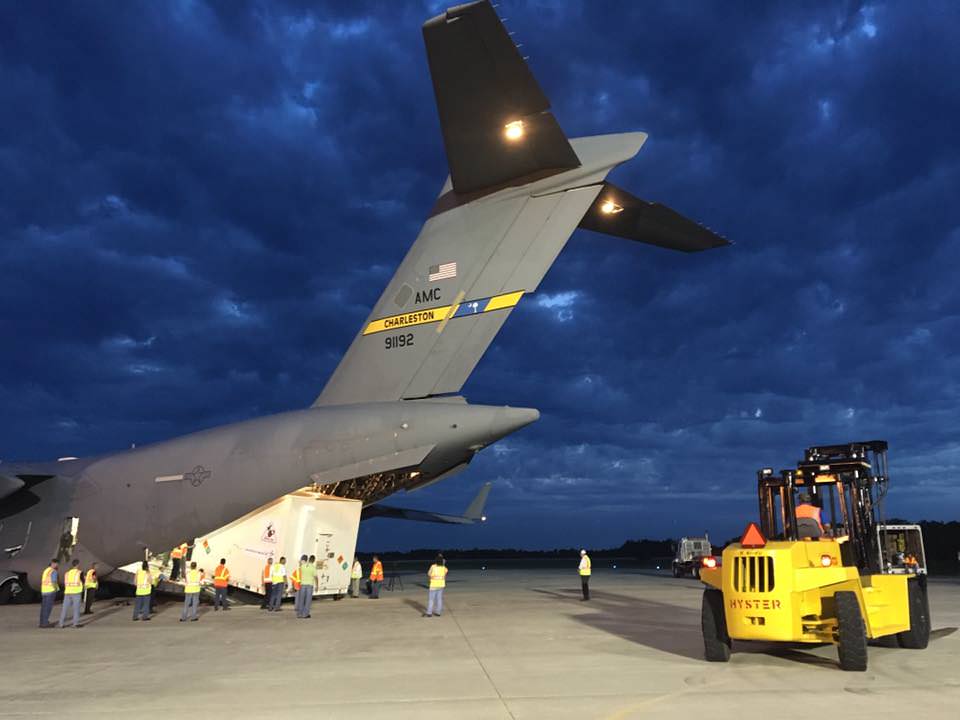
OSIRIS-REx complements NASA’s Asteroid Initiative – including the Asteroid Redirect Mission (ARM) which is a robotic spacecraft mission aimed at capturing a surface boulder from a different near-Earth asteroid and moving it into a stable lunar orbit for eventual up close sample collection by astronauts launched in NASA’s new Orion spacecraft. Orion will launch atop NASA’s new SLS heavy lift booster concurrently under development.
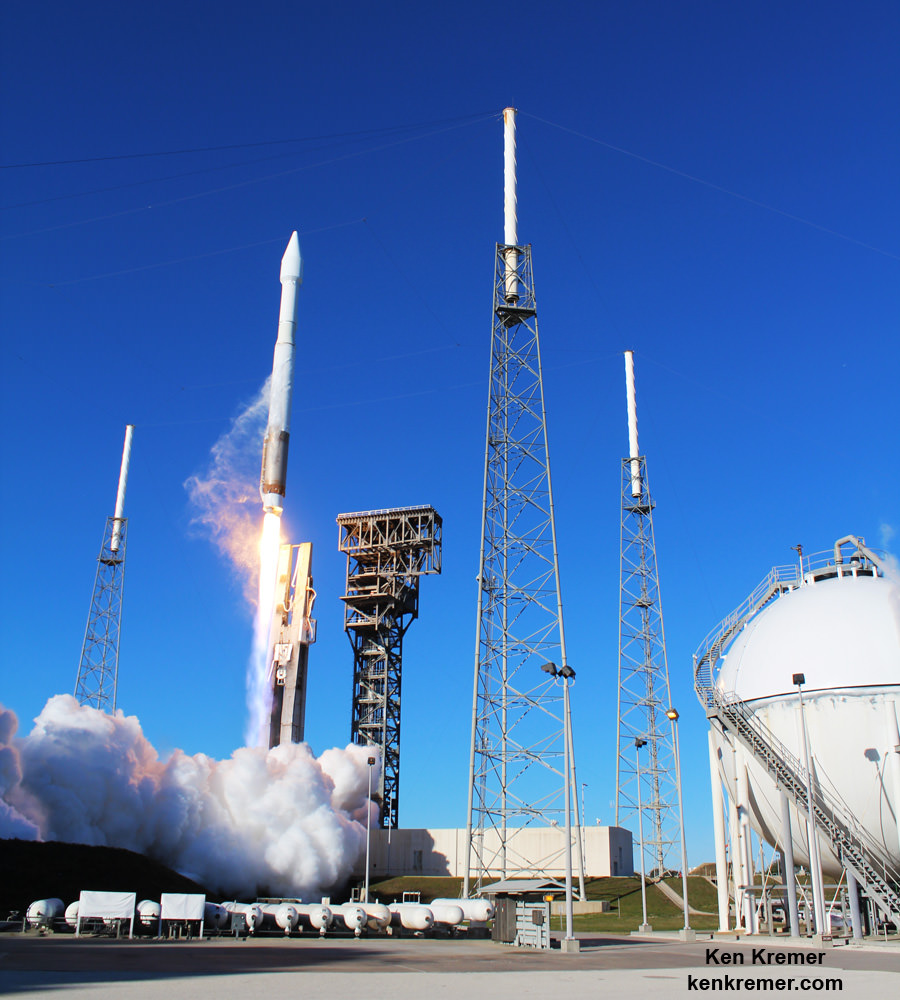
Stay tuned here for Ken’s continuing Earth and planetary science and human spaceflight news.

